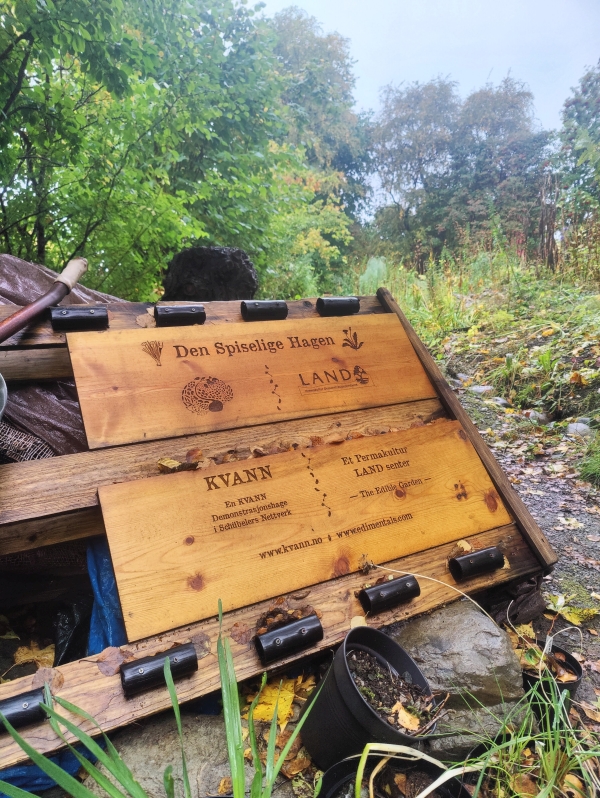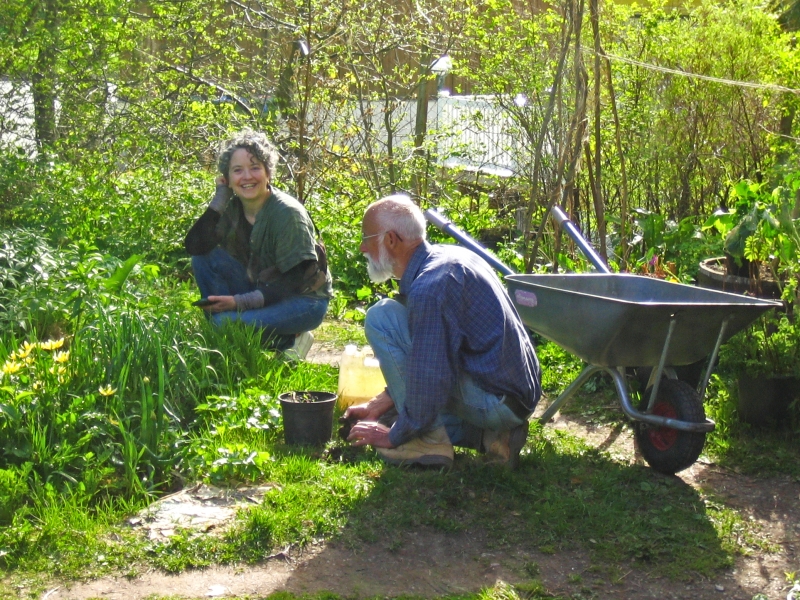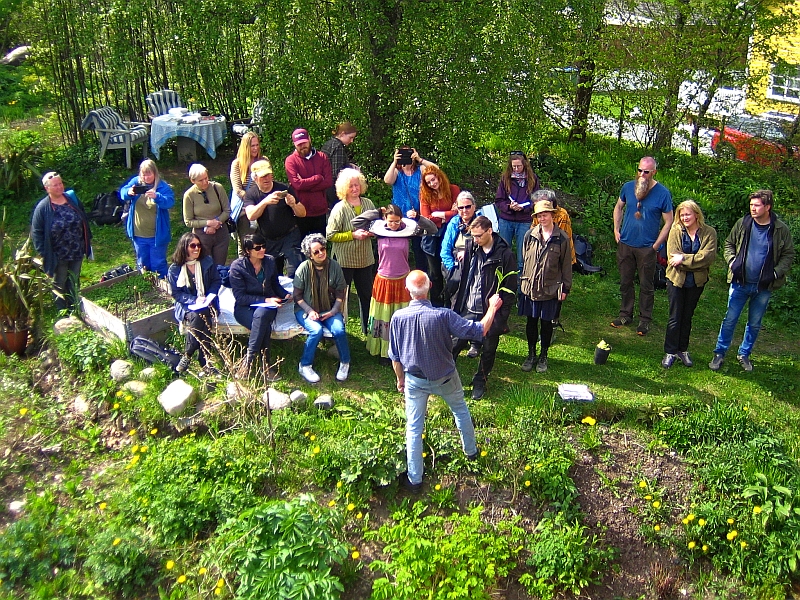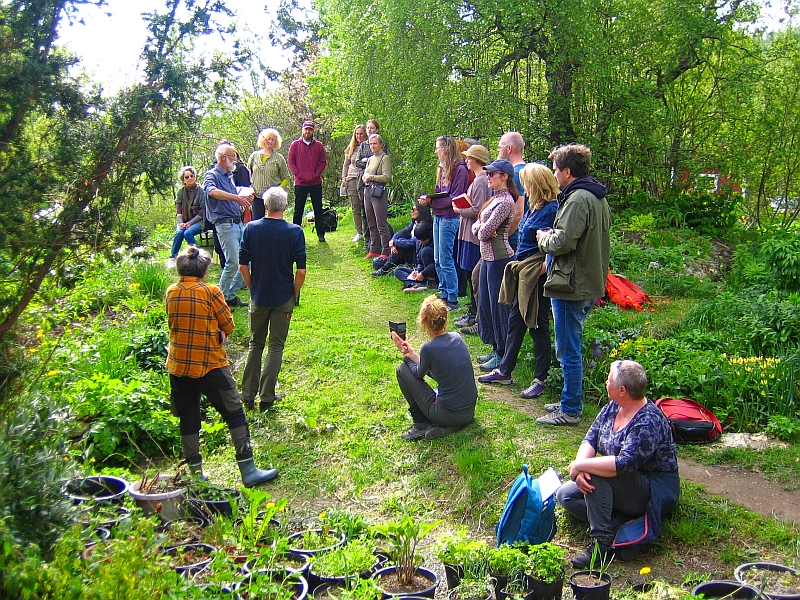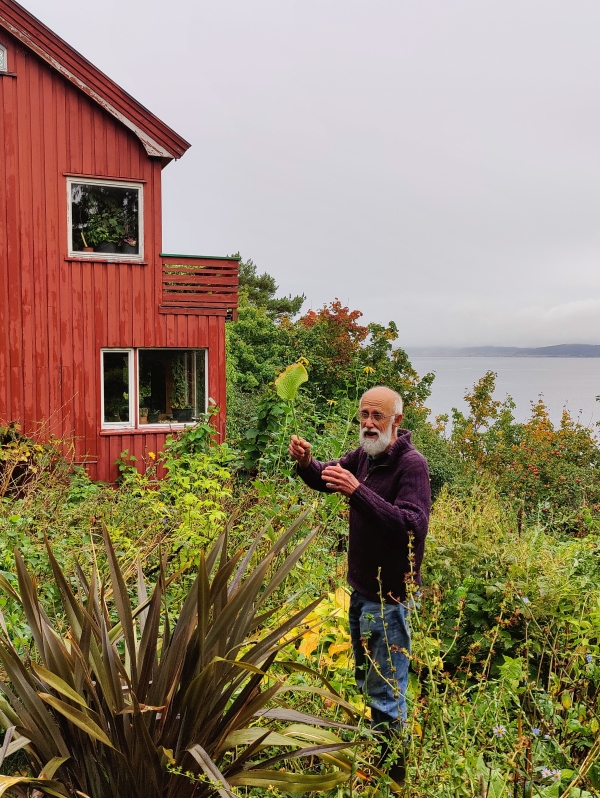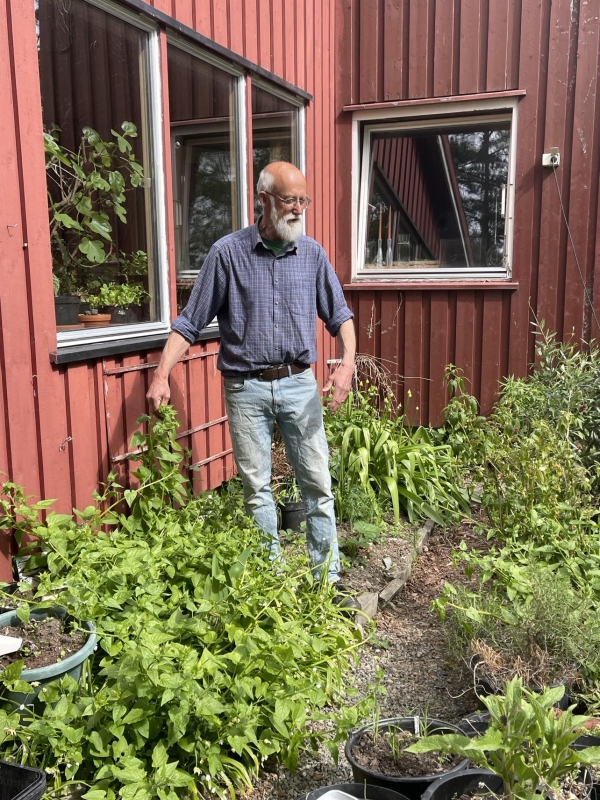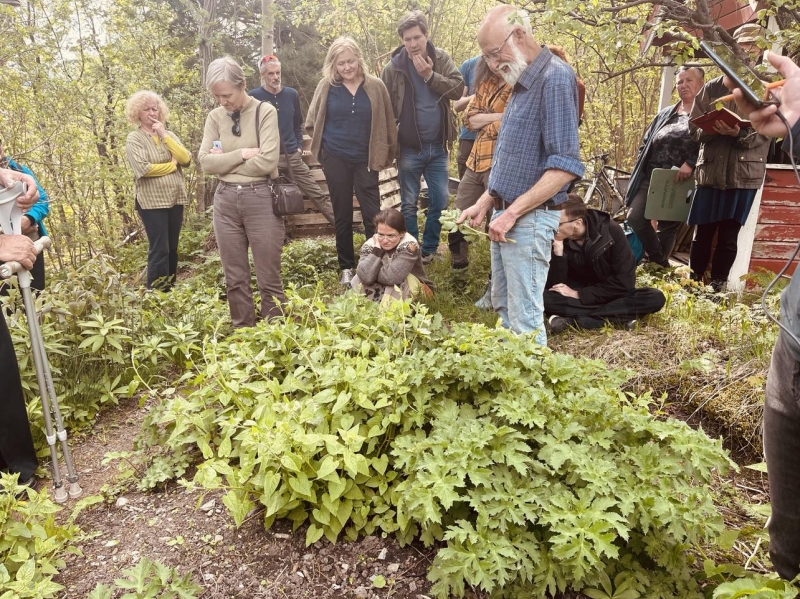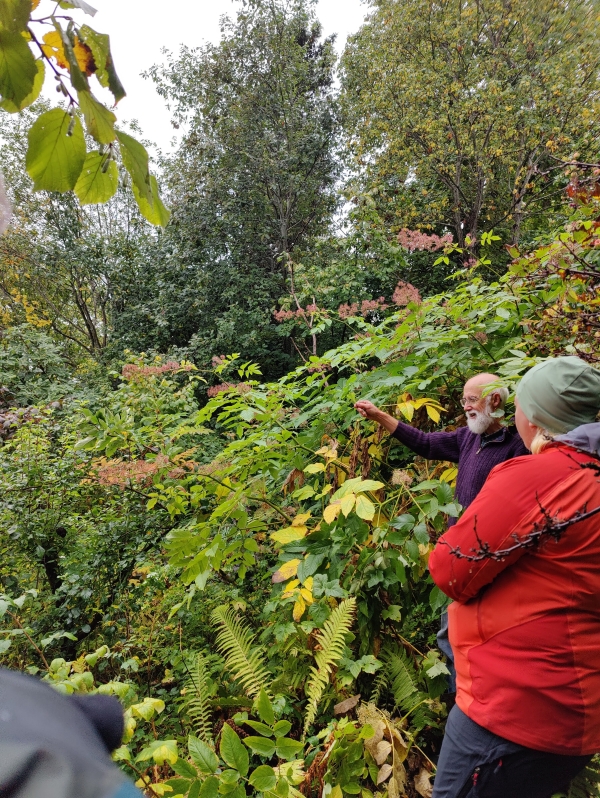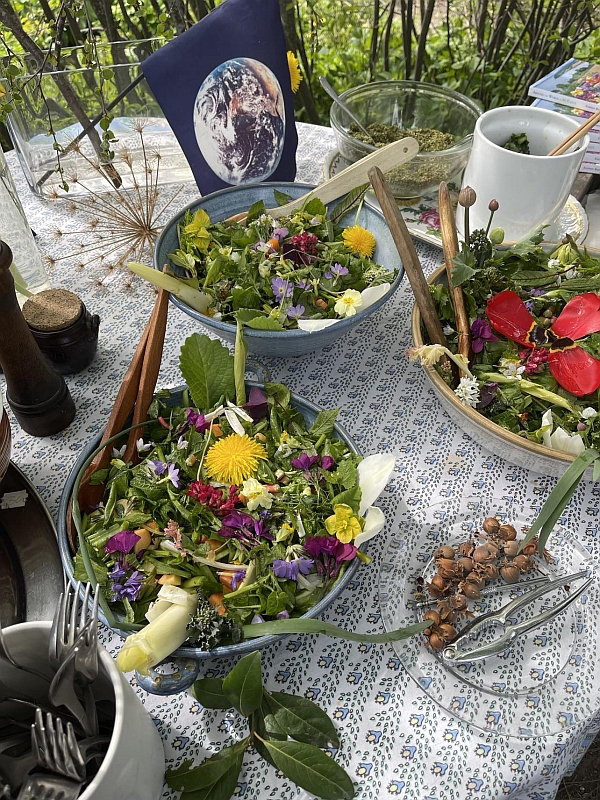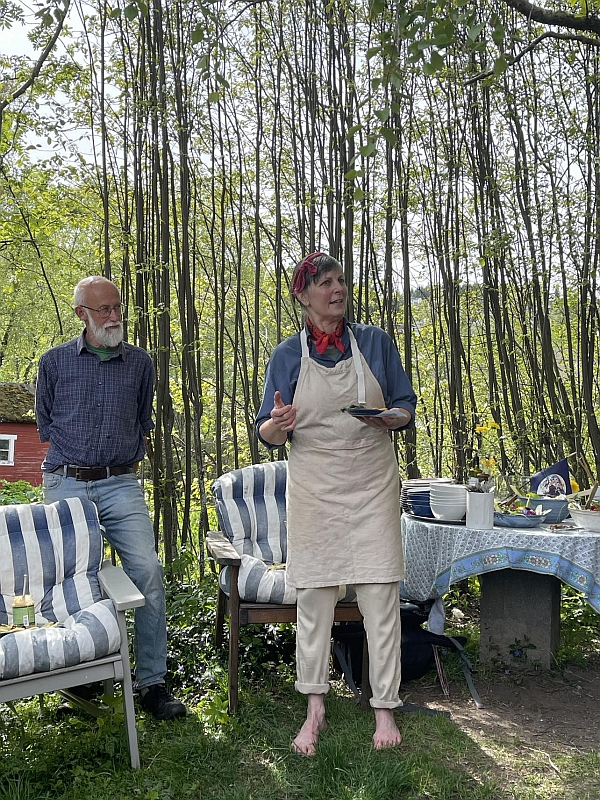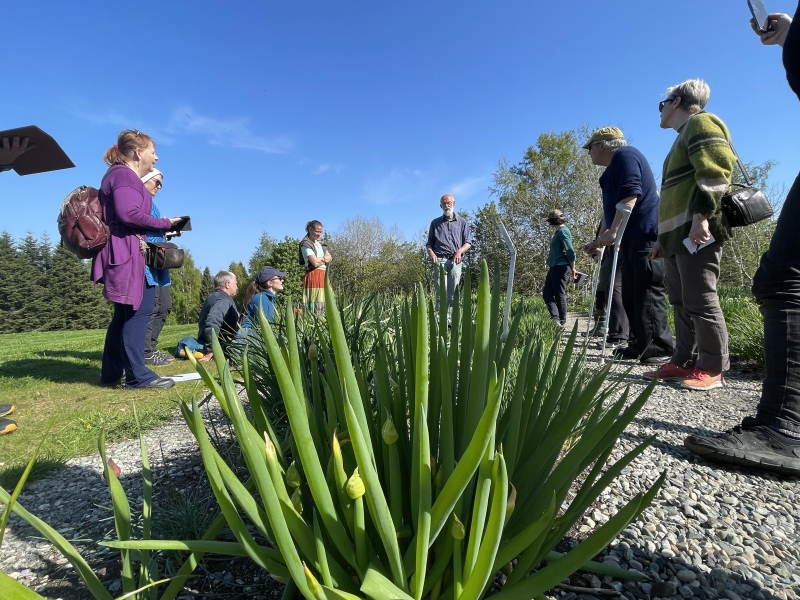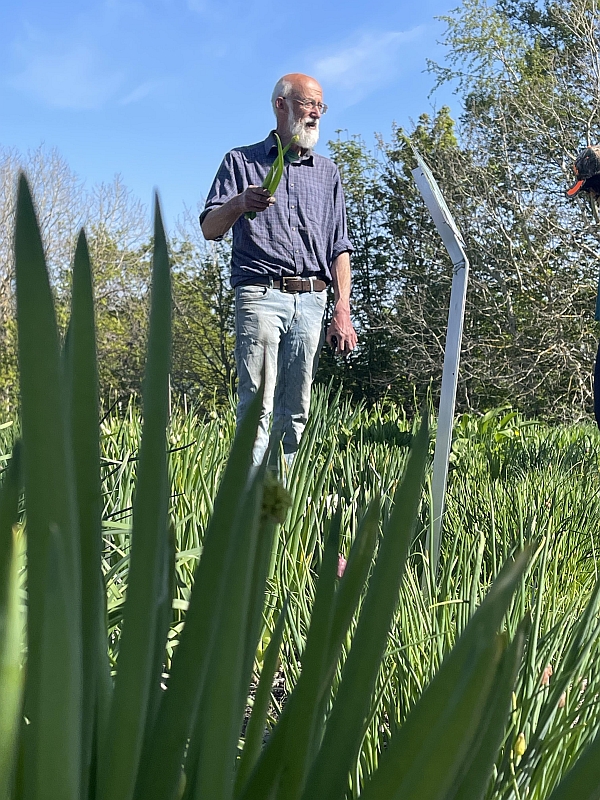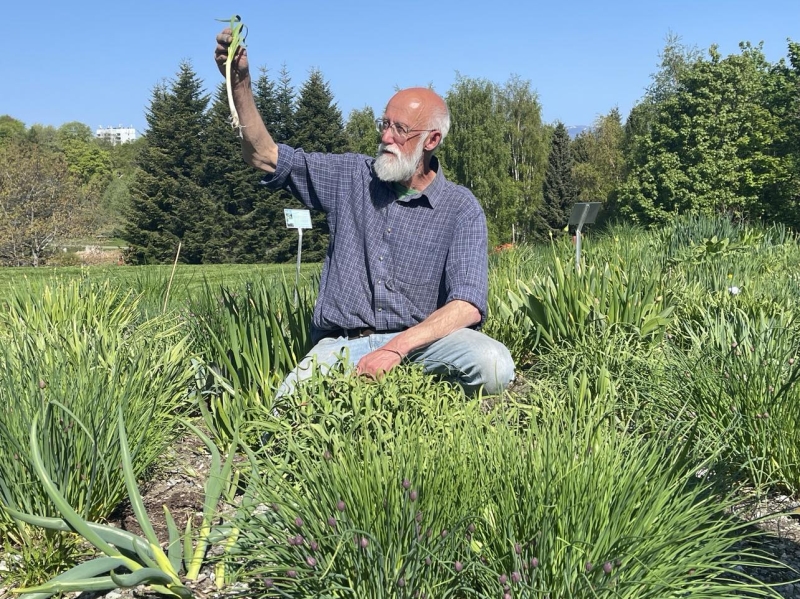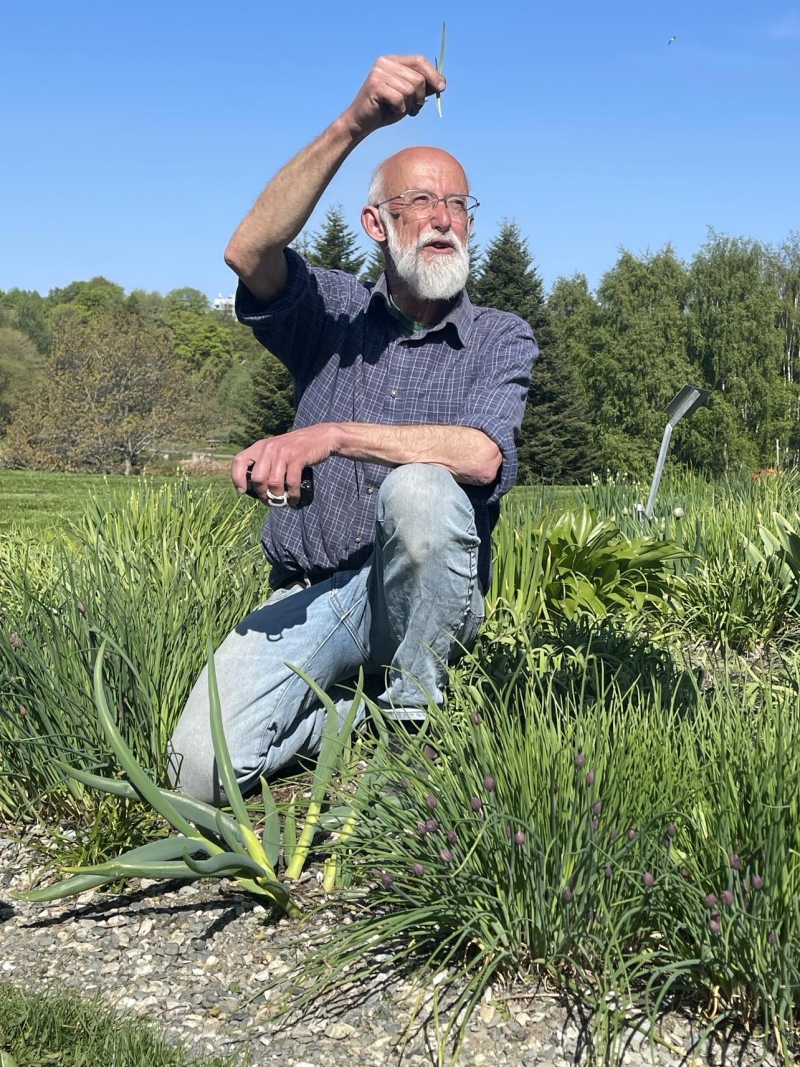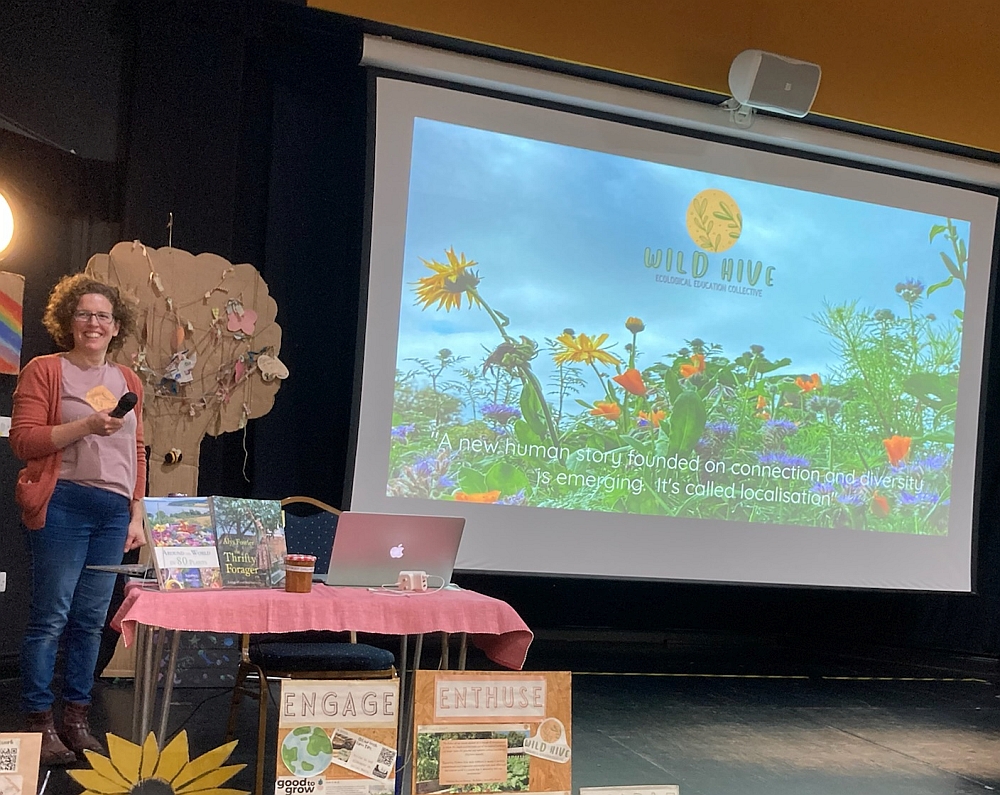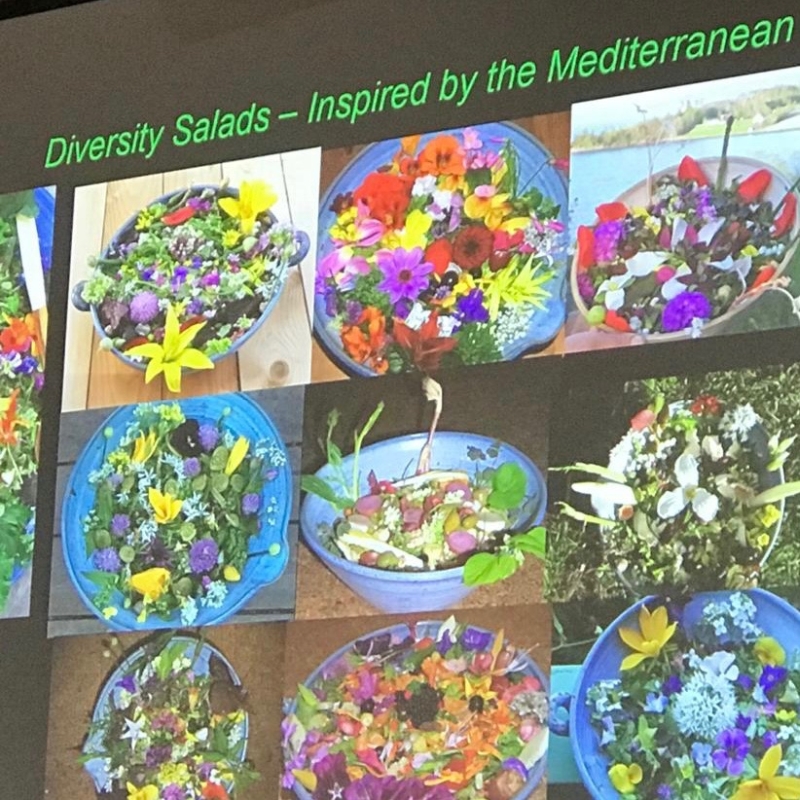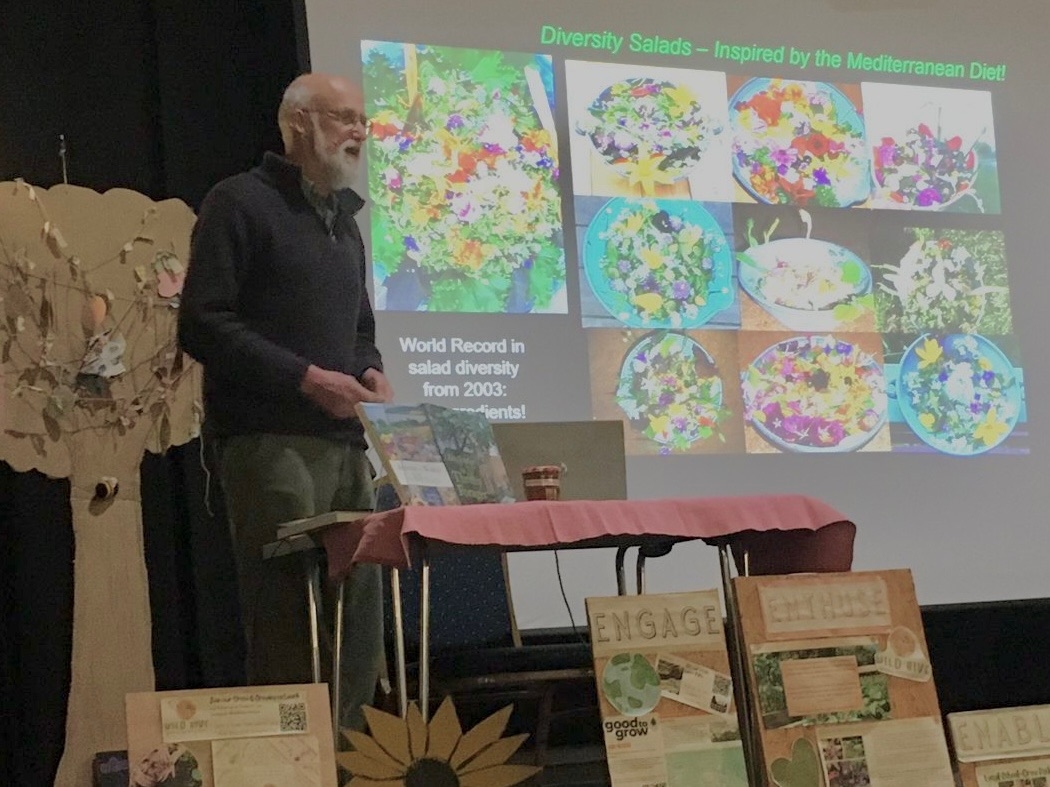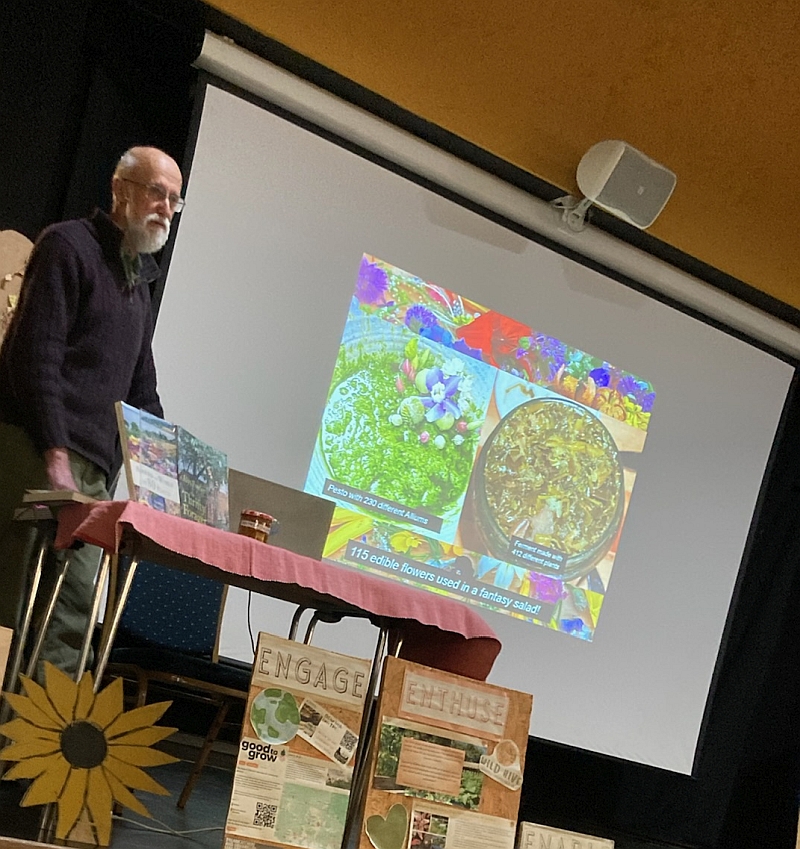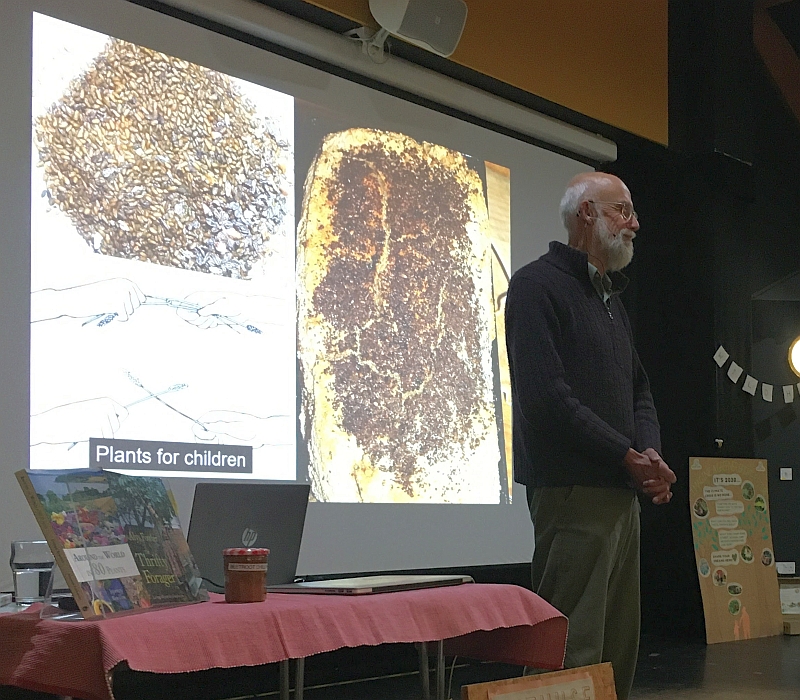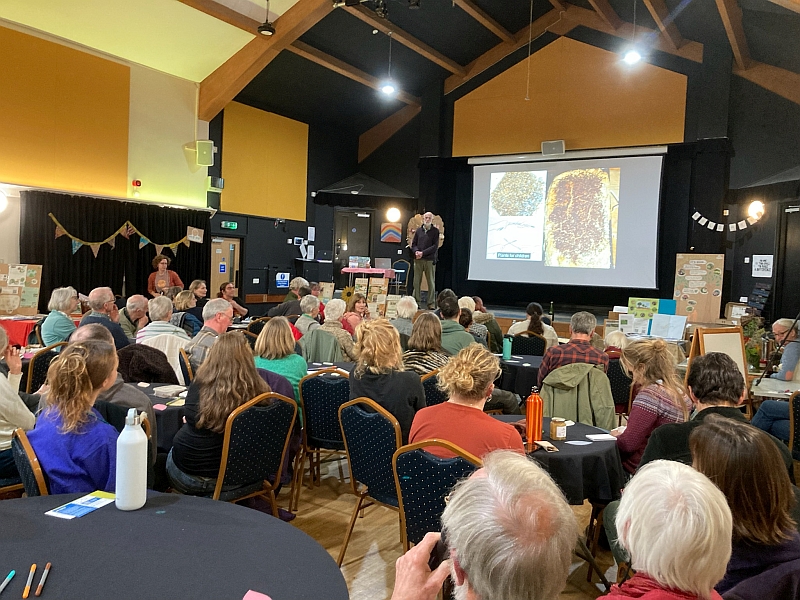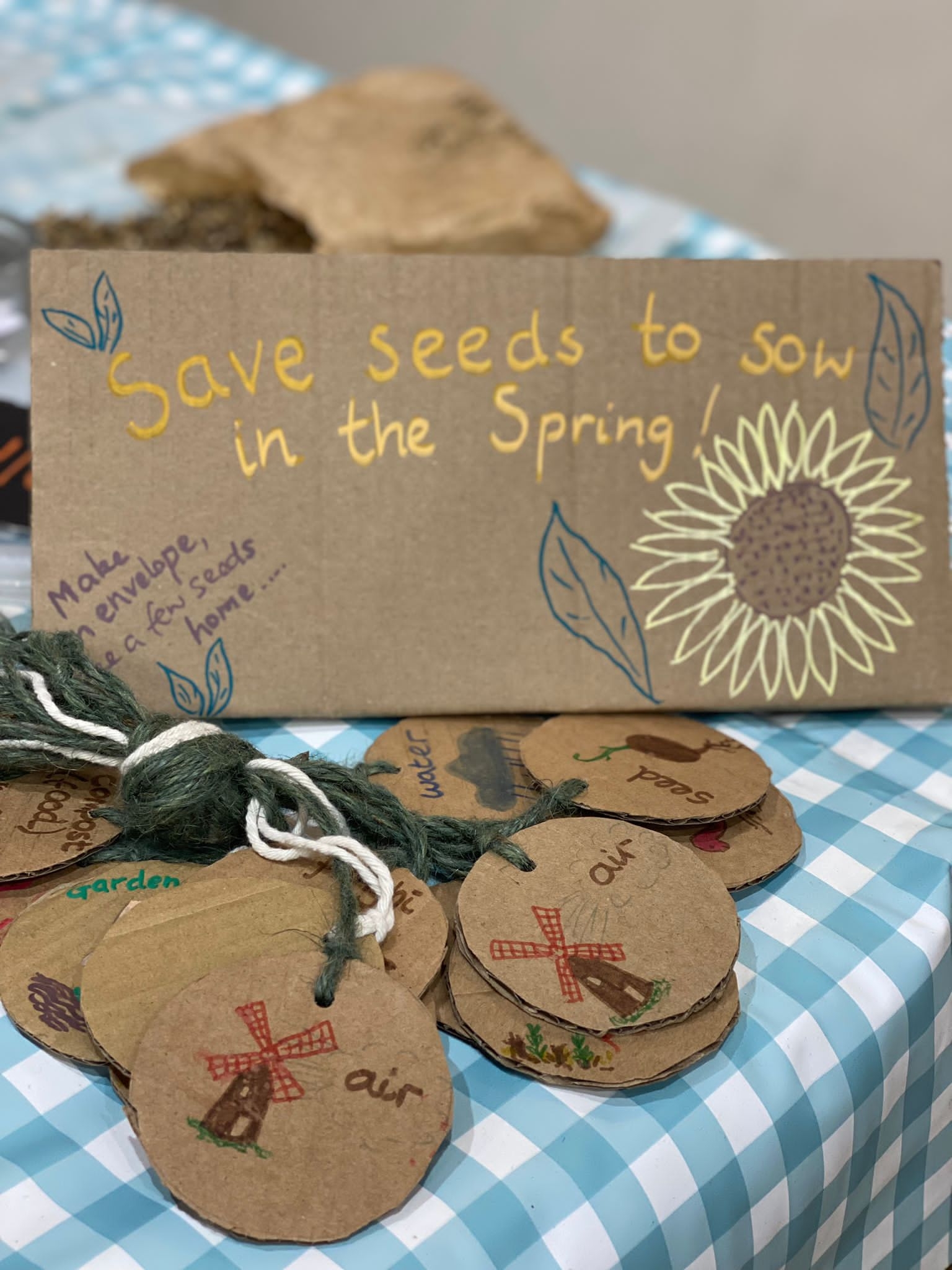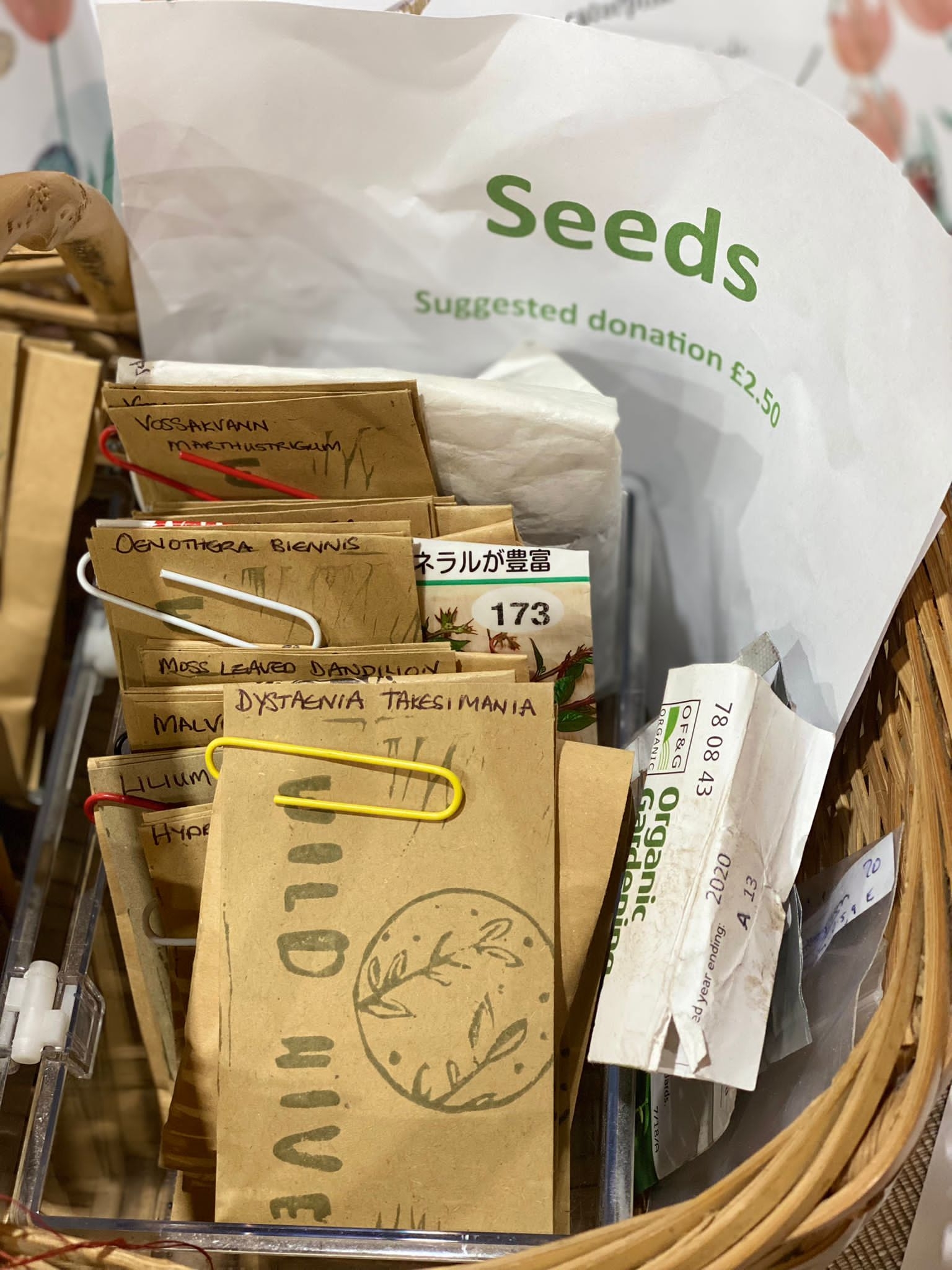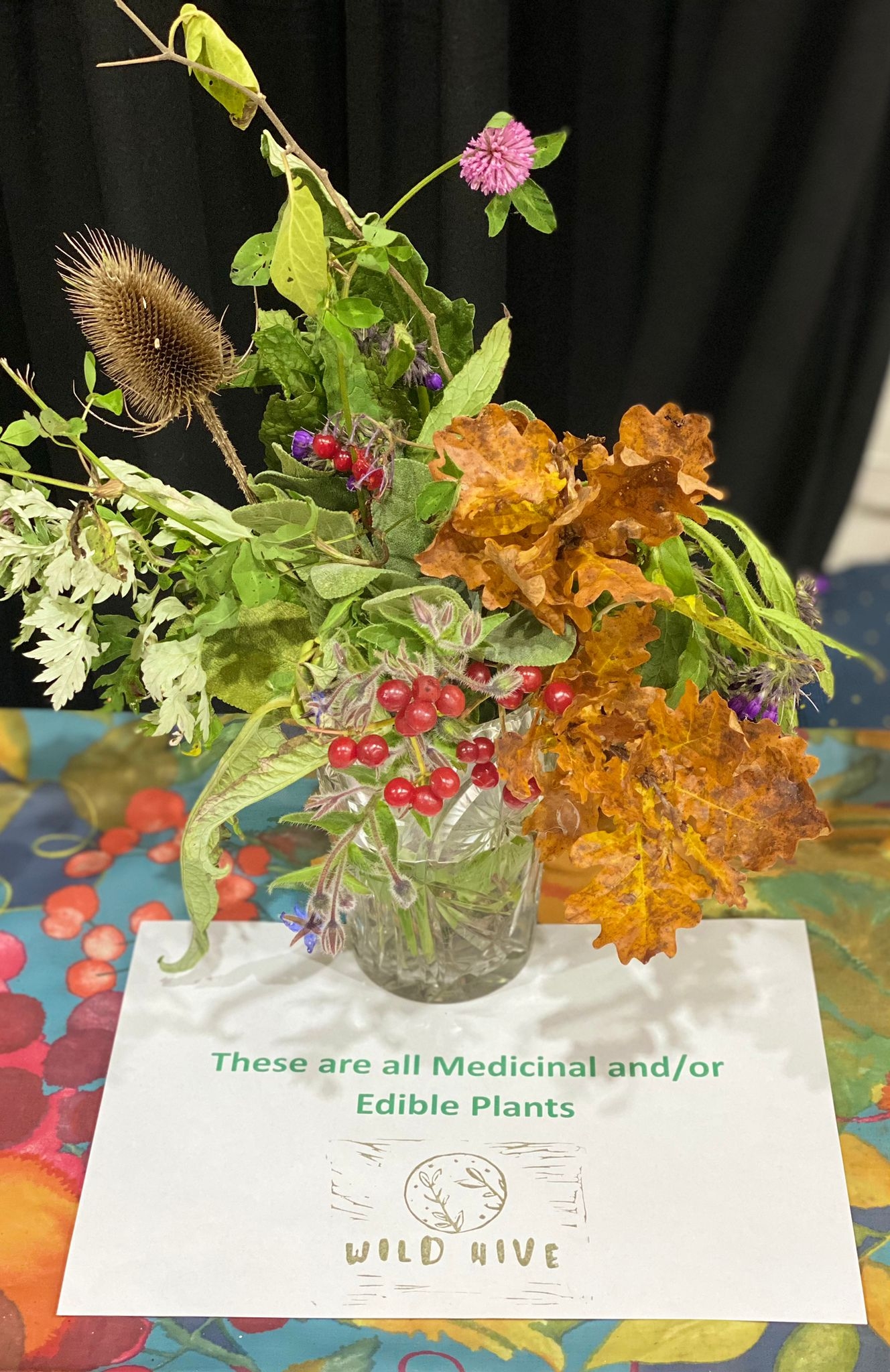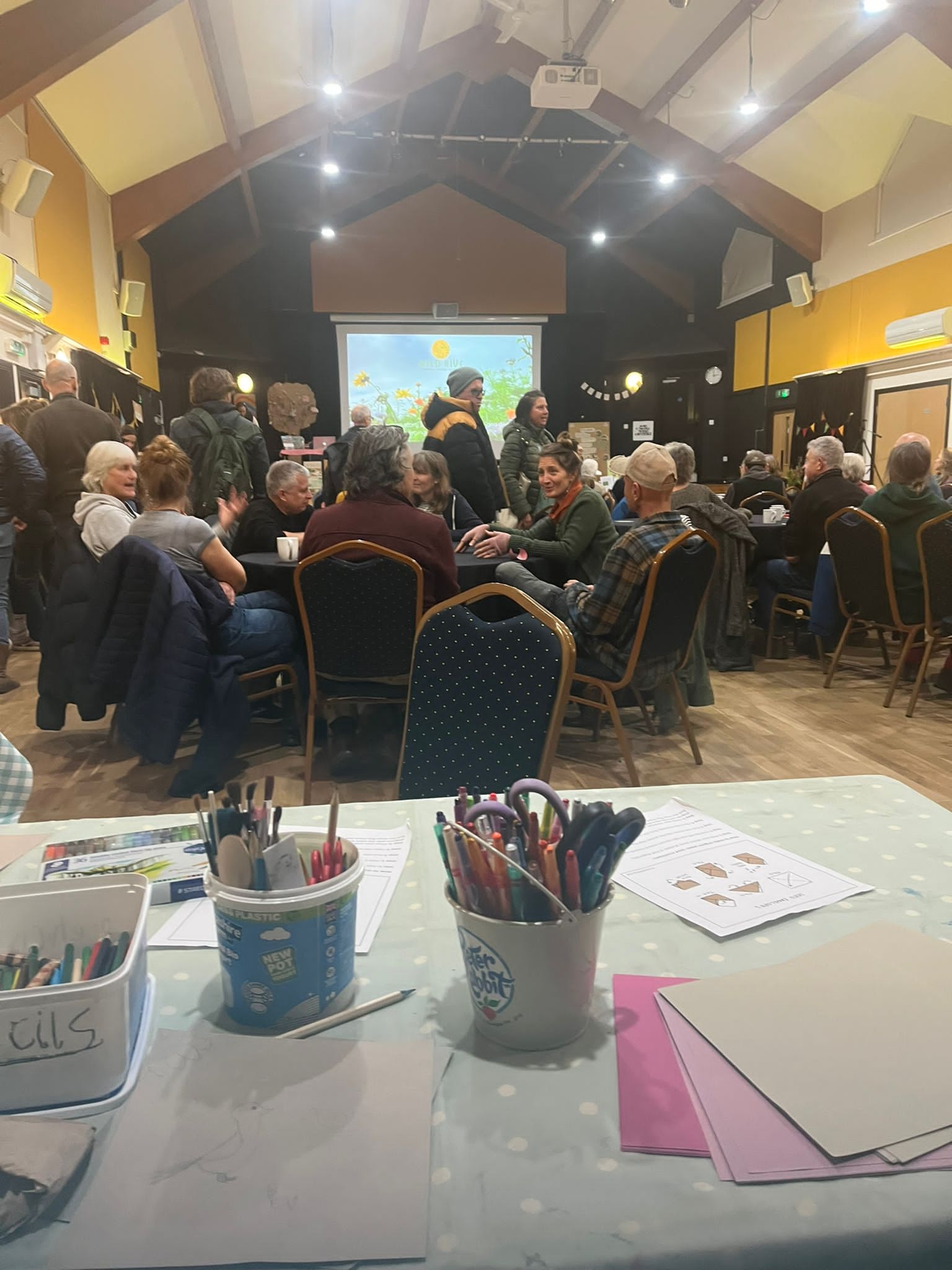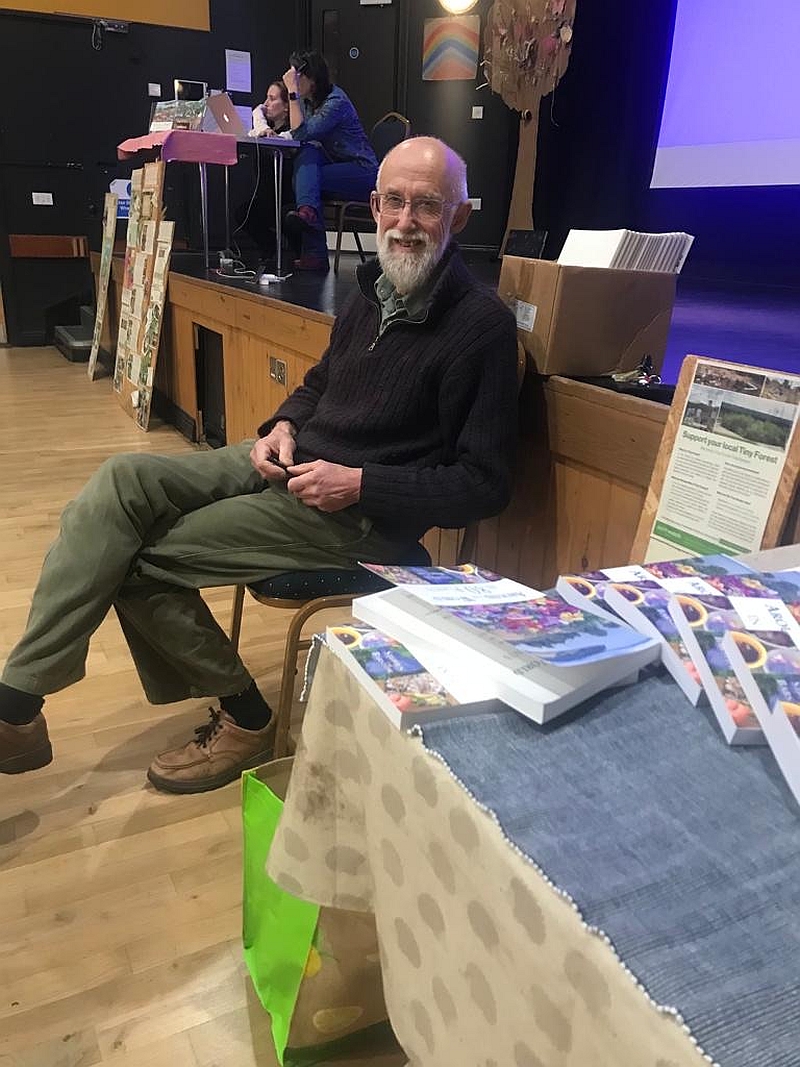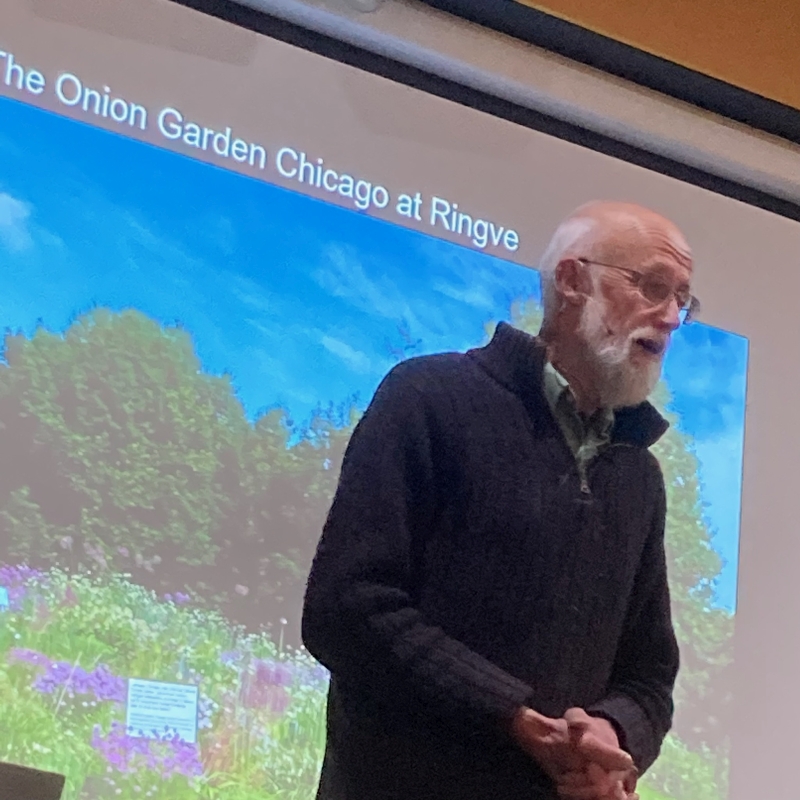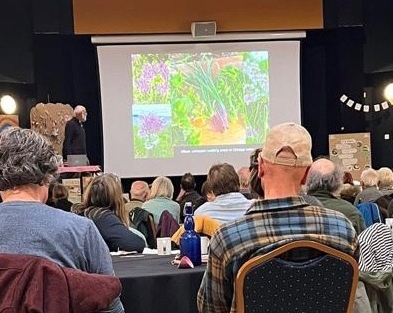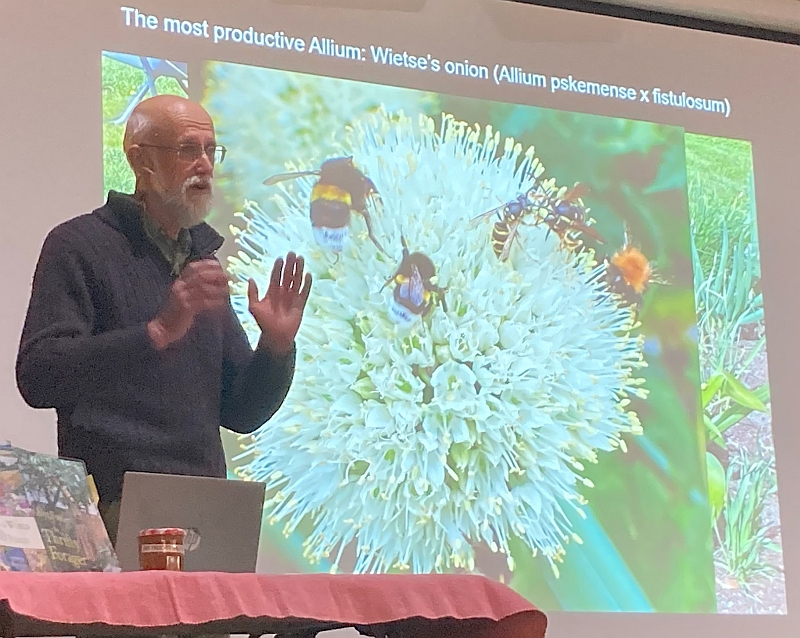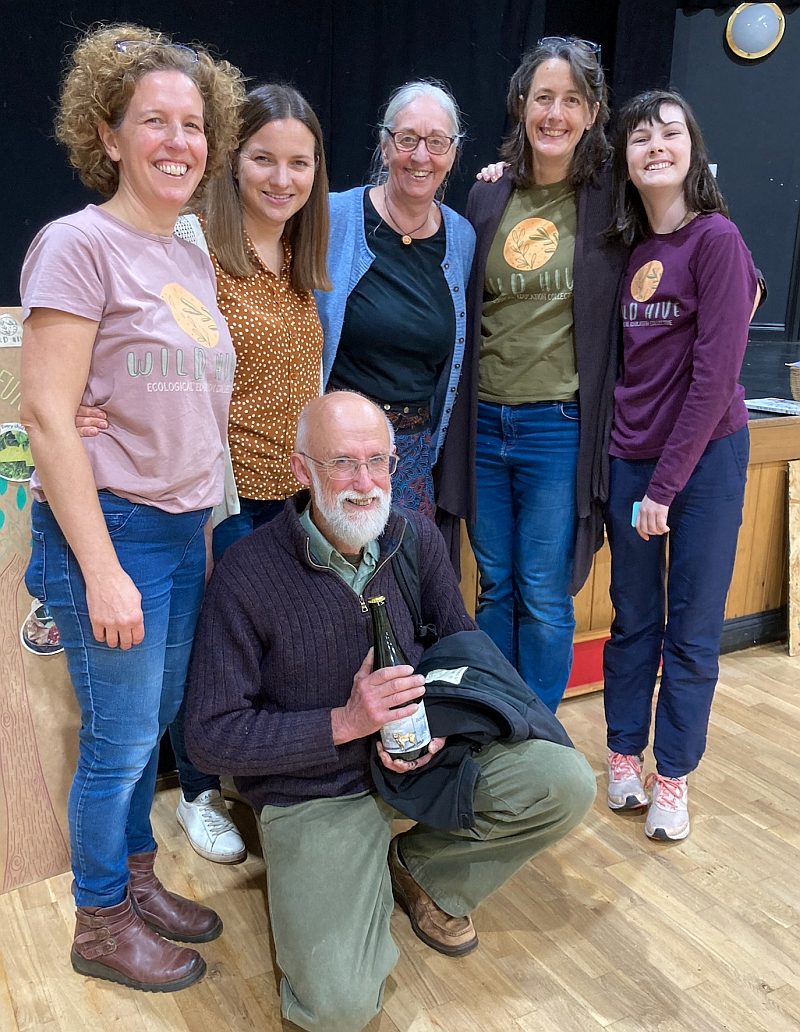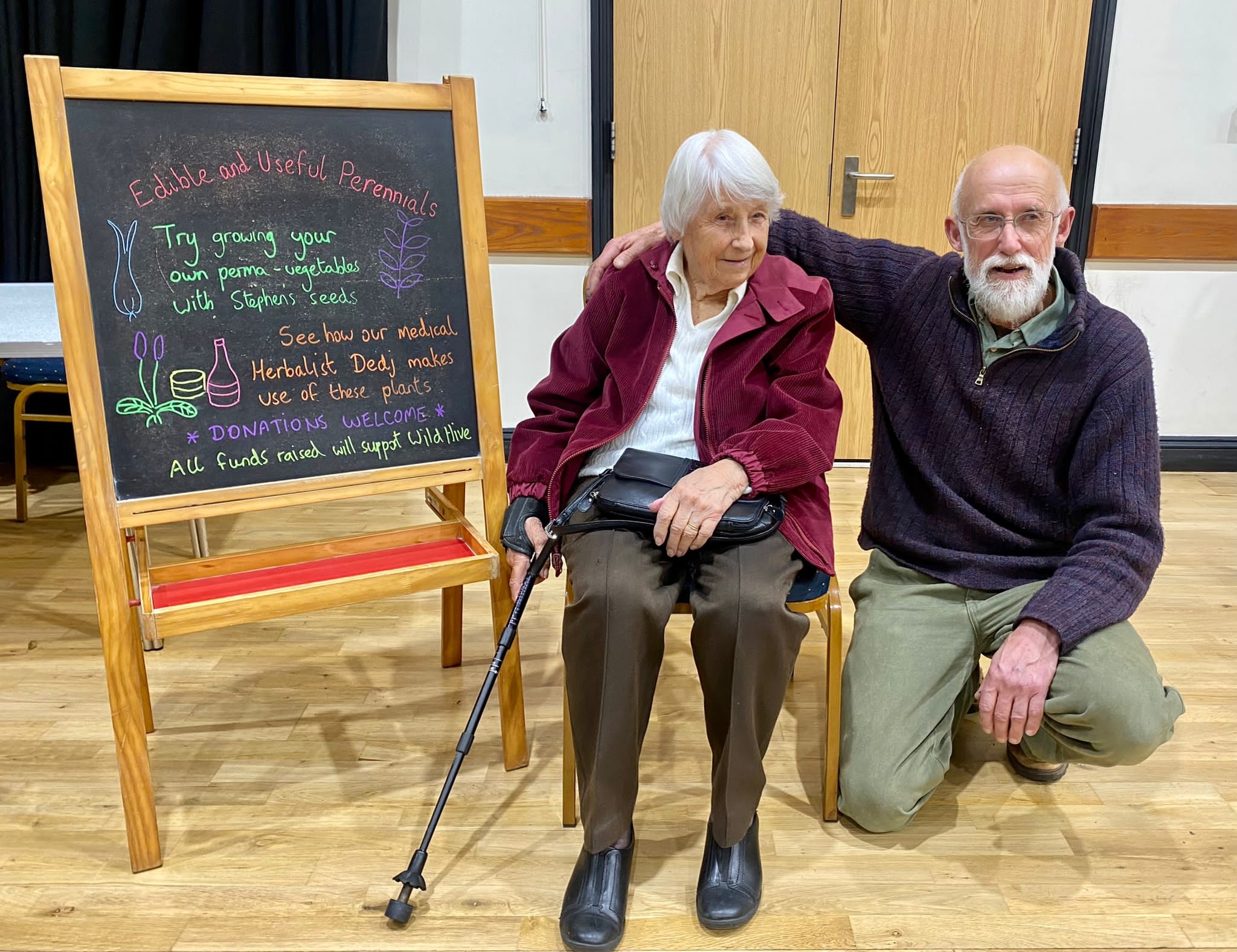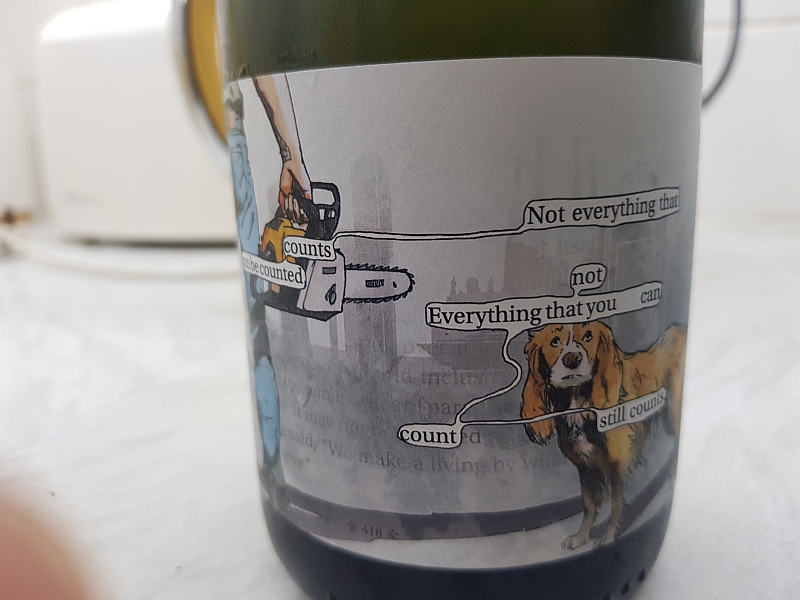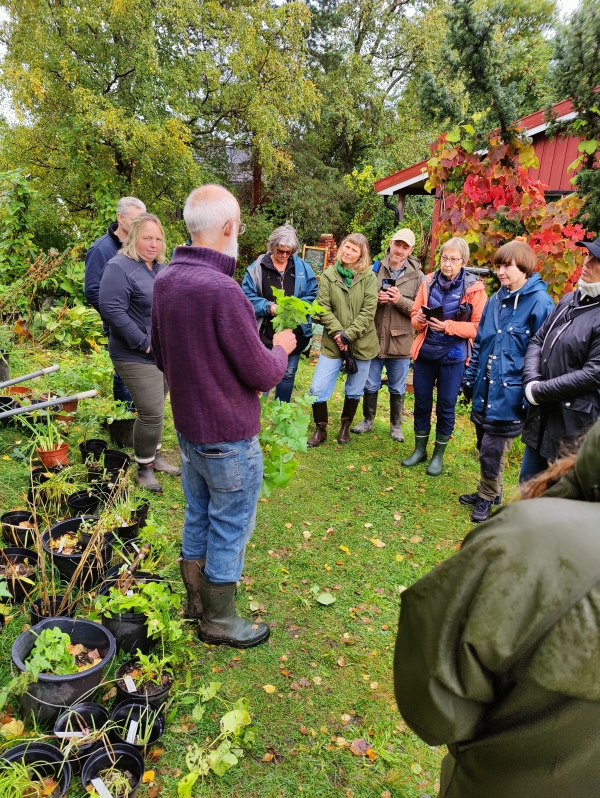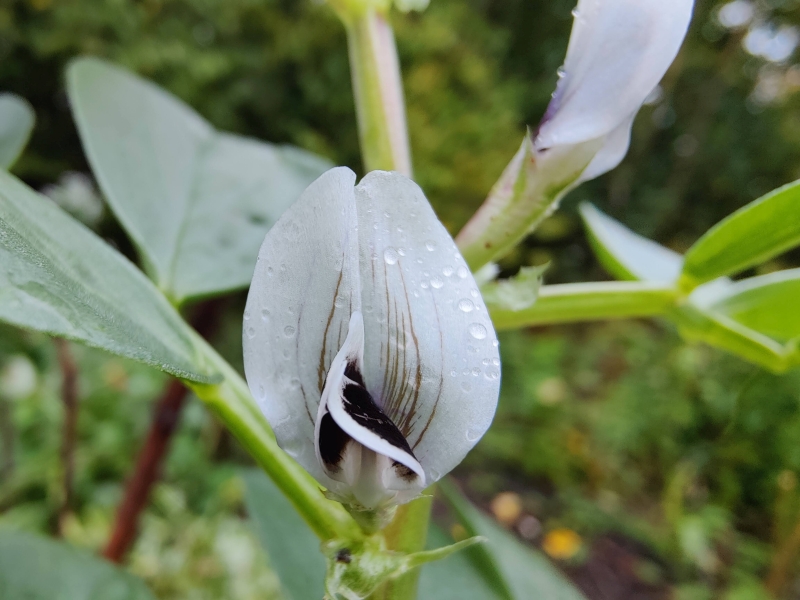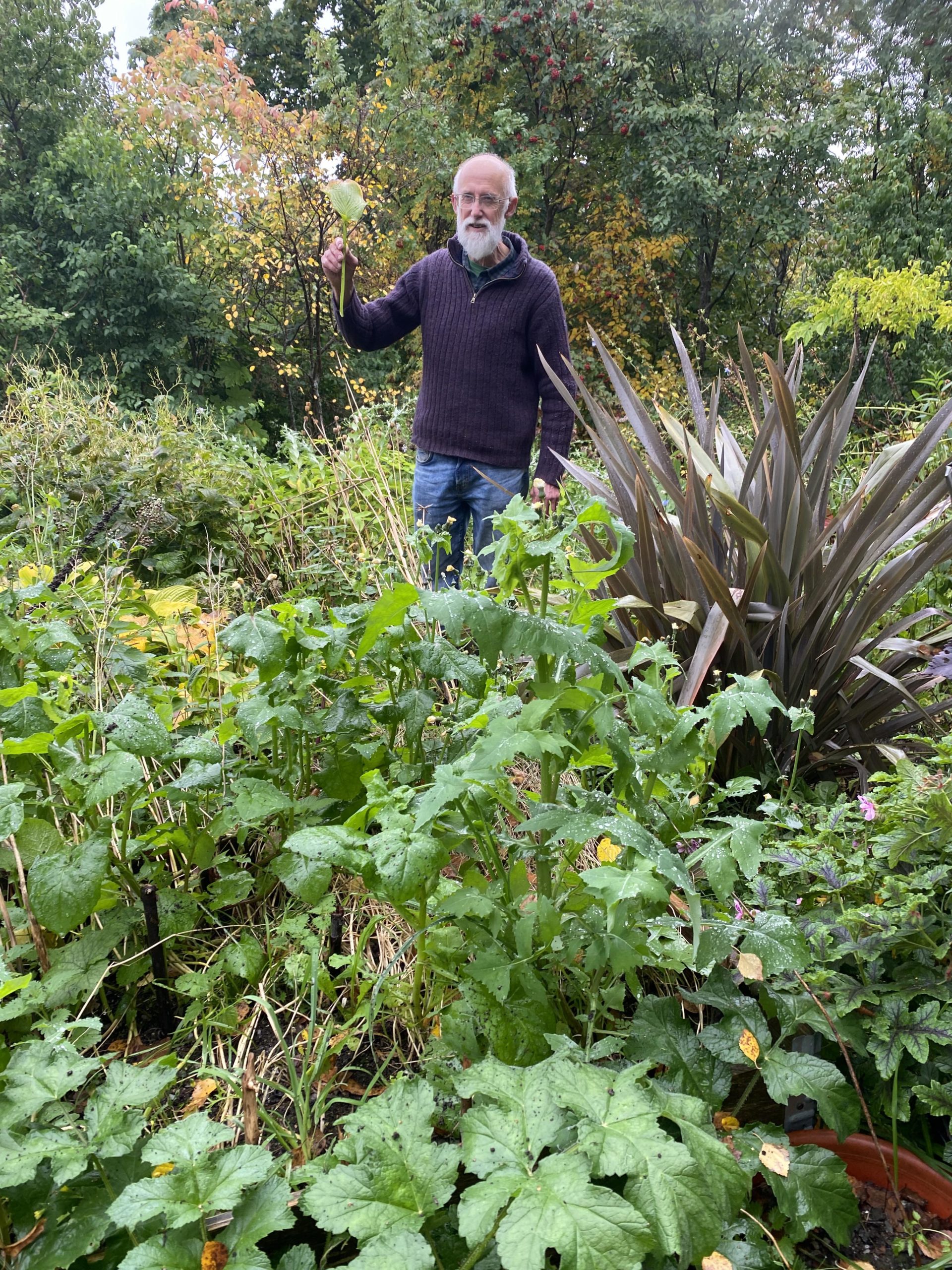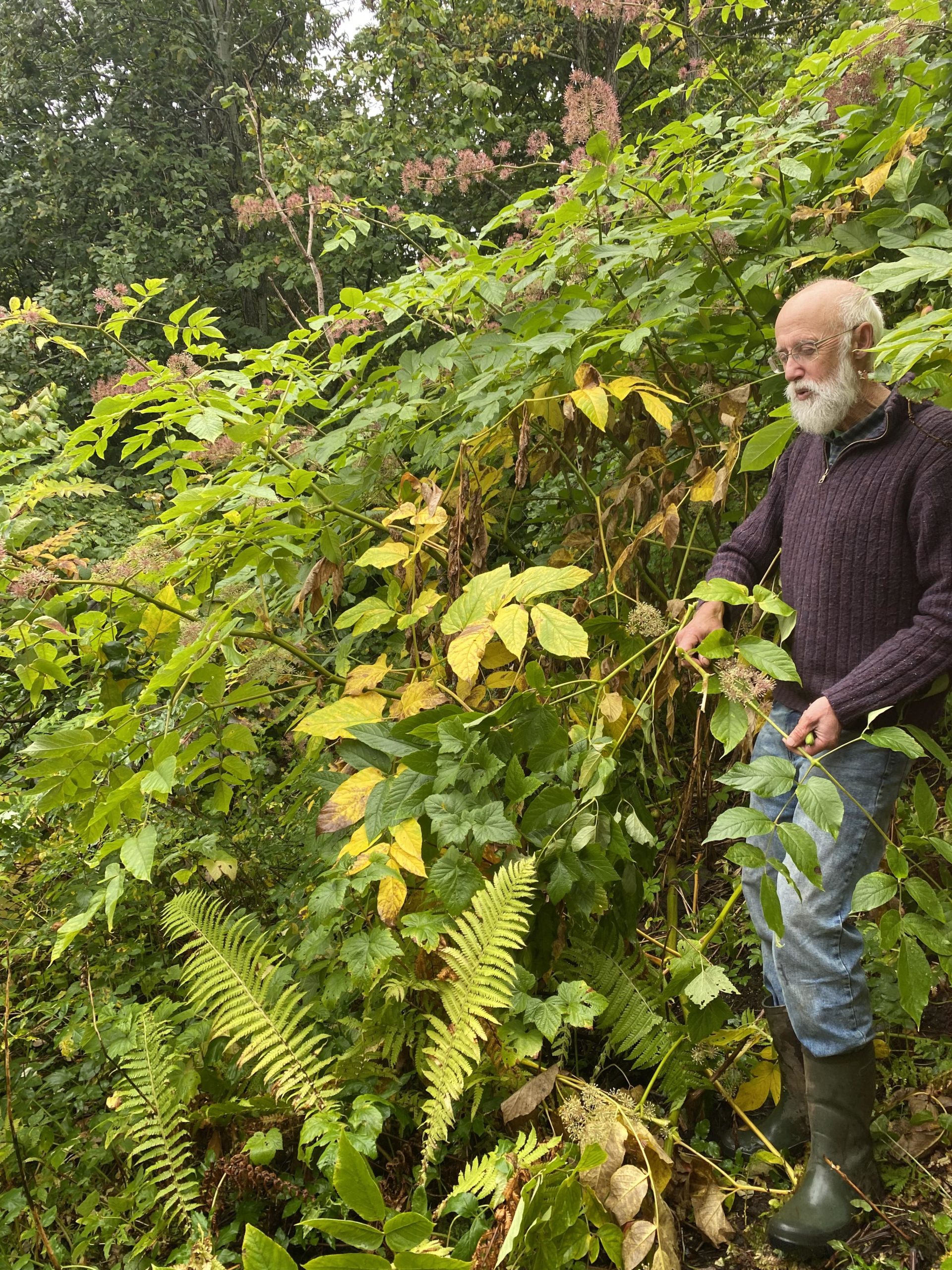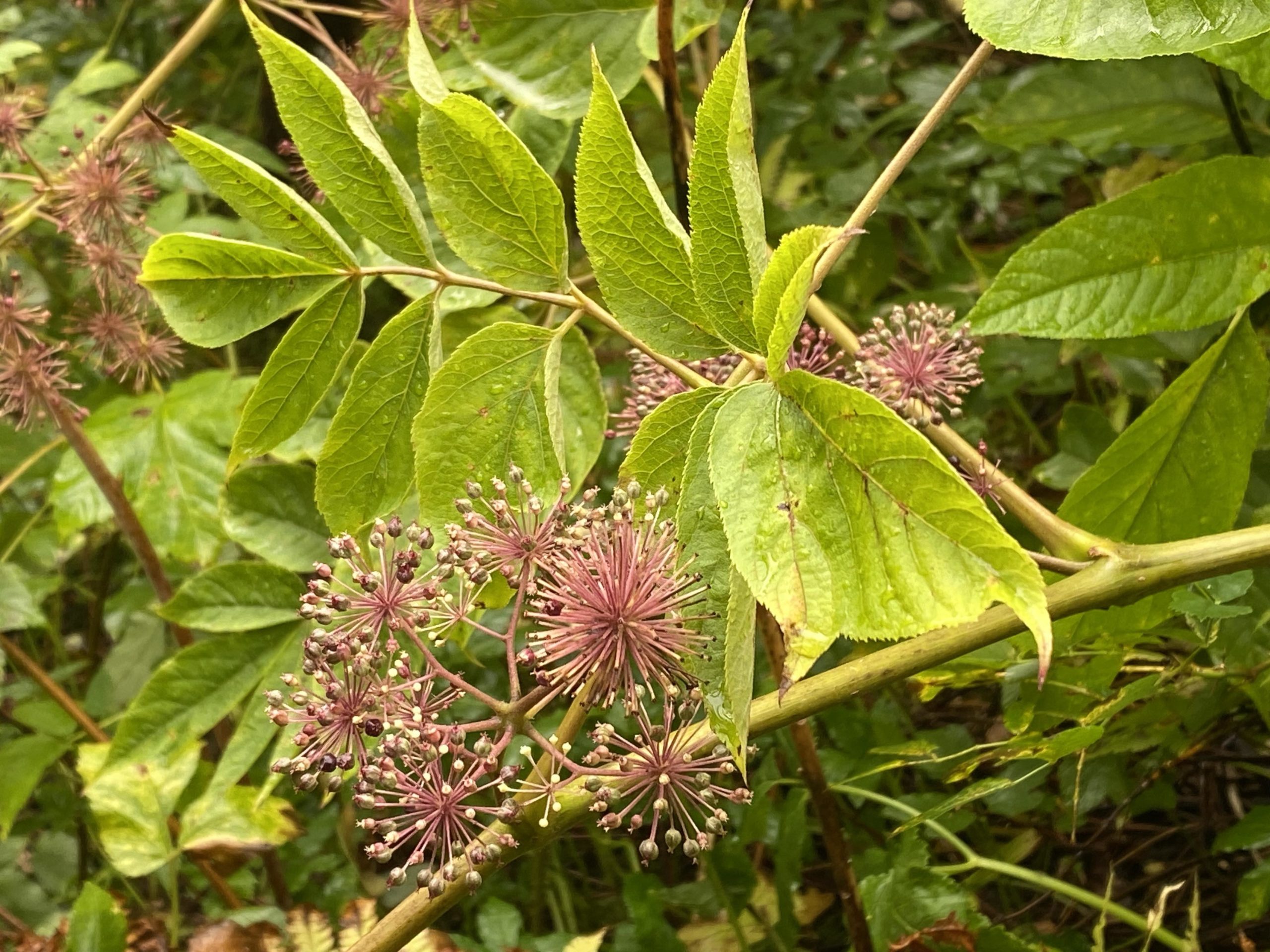My zoom talk “A Virtual Edimentals Walk Around Burnley Gardens” in Melbourne, Australia was recorded and is now available
https://youtu.be/rHX3q3Dng4k
I based the talk on Edimentals that can be grown in Melbourne, based on plant lists for Burnley Gardens and the Royal Botanical Gardens in Melbourne!
After the talk, Sam Taylor and his team made a salad from plants growing in the garden! See pictures below.
Thanks for inviting me, it was fun to put this together, and thanks for allowing me to put the recording of this unique talk up on my youtube channel!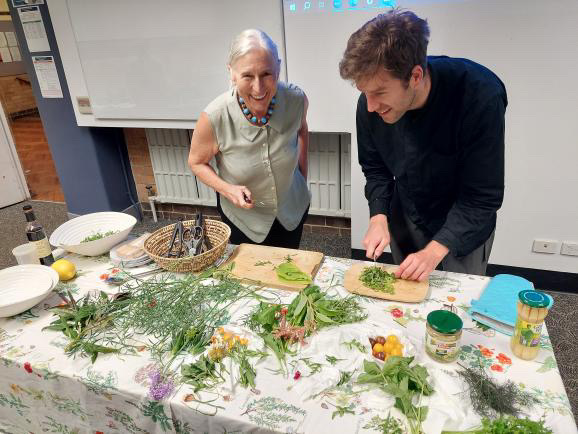
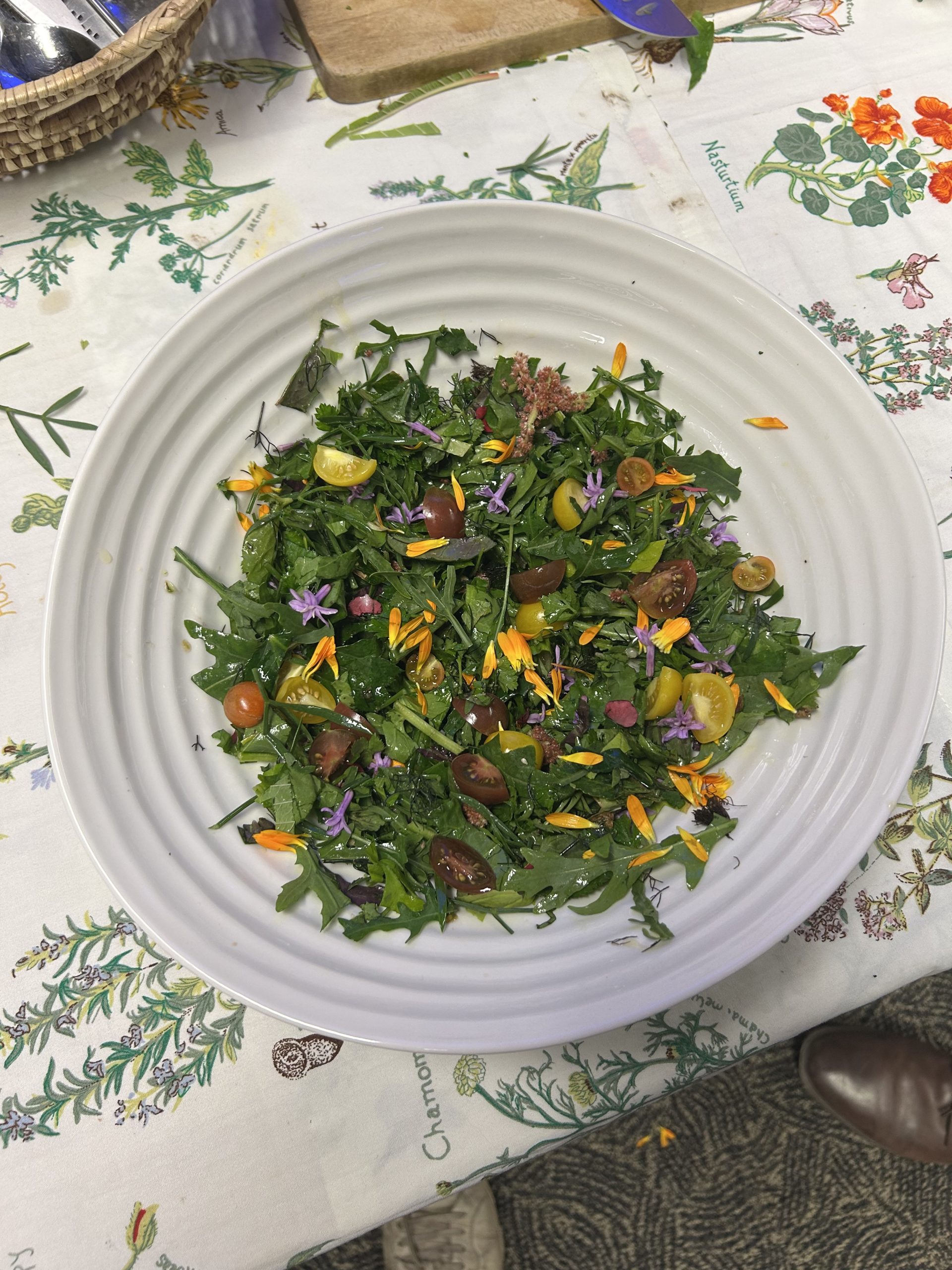
Category Archives: Talks
Future heirloom in Copenhagen
I was chuffed to be asked to be “support act” along with Anders Borgen on the last date of landrace gardener Joseph Lofthouse’s European tour in Copenhagen on 20th October! I therefore broke my decision not to travel outside of Norway to give talks, in particular as I can get there by train ![]() Looking forward to a great day and meeting old friends again! See you there?
Looking forward to a great day and meeting old friends again! See you there?
More information:
https://hrs.dk/future-heirloom
Seed saving talk weekend
Thanks to KVANN (Norwegian Seed Savers) colleague Andrew McMillion for coming up to Trondheim to give his seed saving course for local KVANN and Væres Venner Community Garden members!
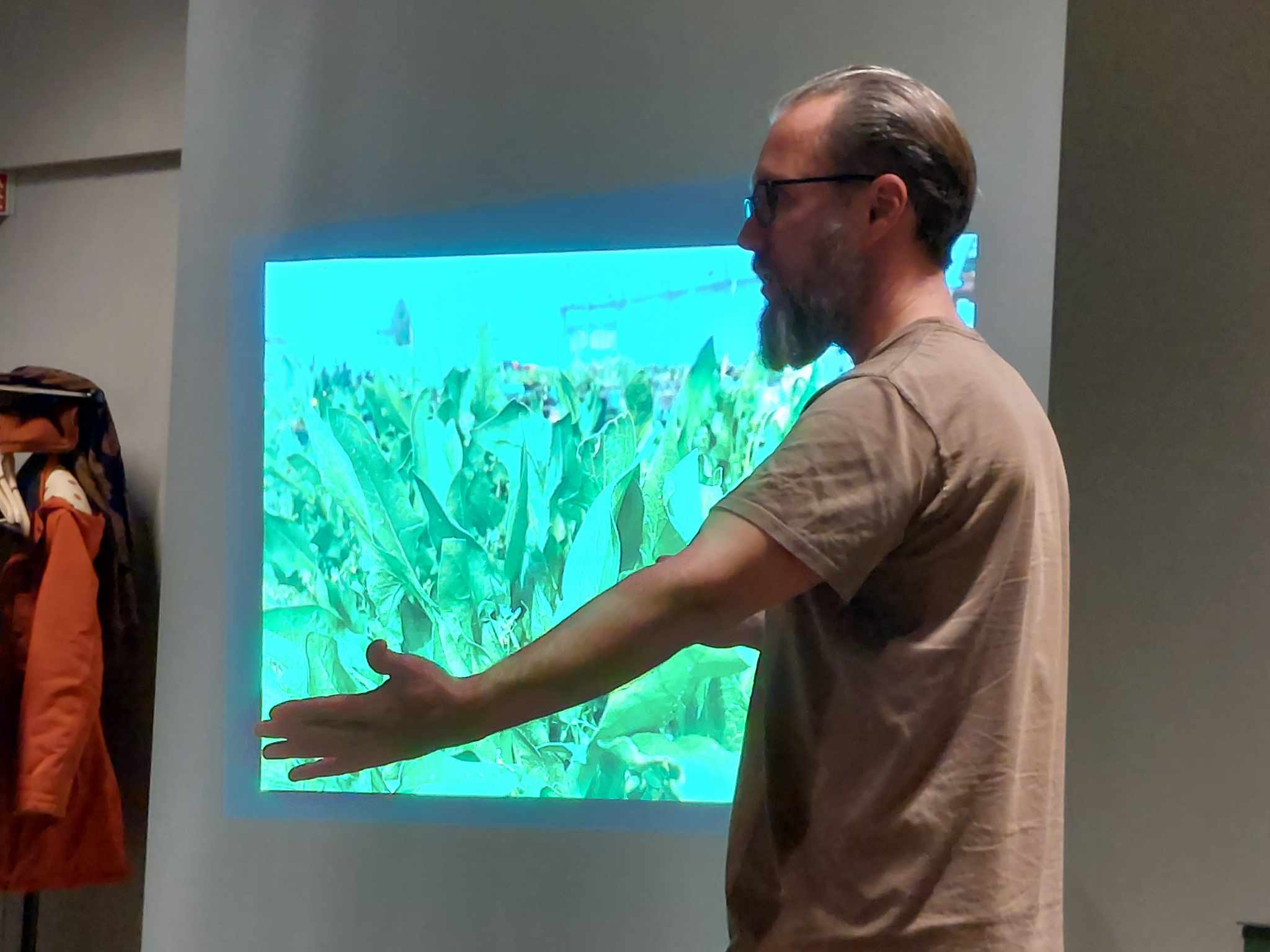
…and there was time for a Malvik visit, a seed saving and breeding chat, a tour of my seed boxes and a little salad with Witloof chicory and dandelion pizza.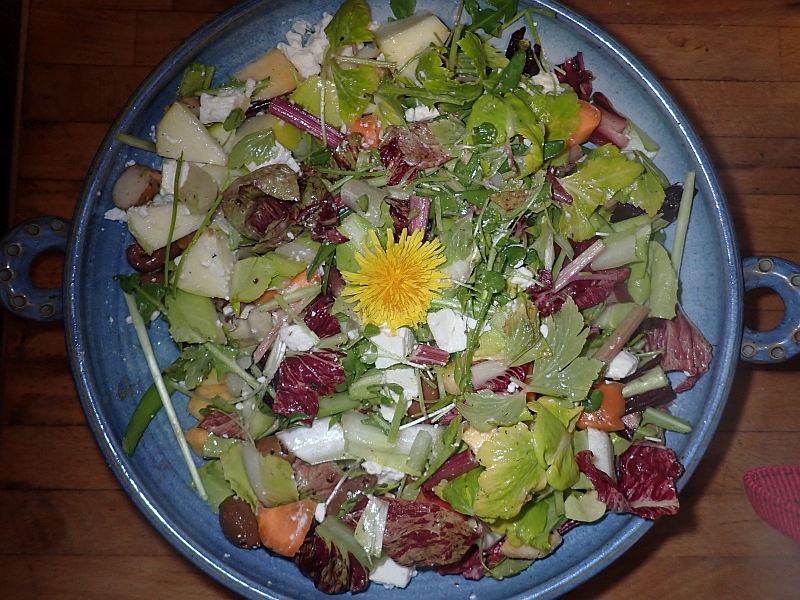
 Salad ingredients: Celery, three chicory varieties, dandelion (including one flower), carrot, Japanese yams, Allium cernuum and Hablitzia (from the garden), Hristo’s onion (Allium flavescens x nutans?), oca (2 varieties), apple (Aroma), horseradish shoots, garlic, chives, wild buckwheat shoots and turnip “Målselvnepe”
Salad ingredients: Celery, three chicory varieties, dandelion (including one flower), carrot, Japanese yams, Allium cernuum and Hablitzia (from the garden), Hristo’s onion (Allium flavescens x nutans?), oca (2 varieties), apple (Aroma), horseradish shoots, garlic, chives, wild buckwheat shoots and turnip “Målselvnepe”
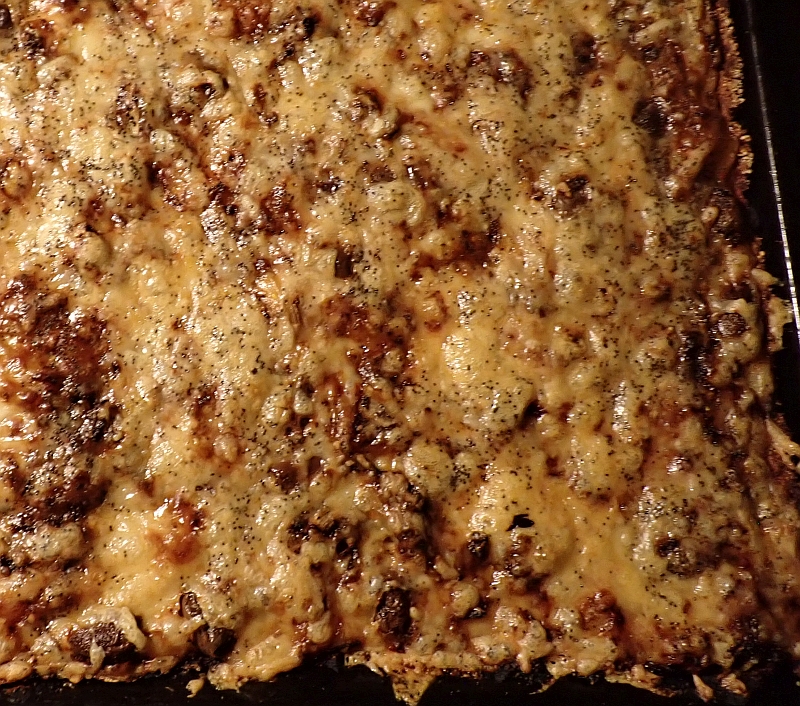
…and my seed archive: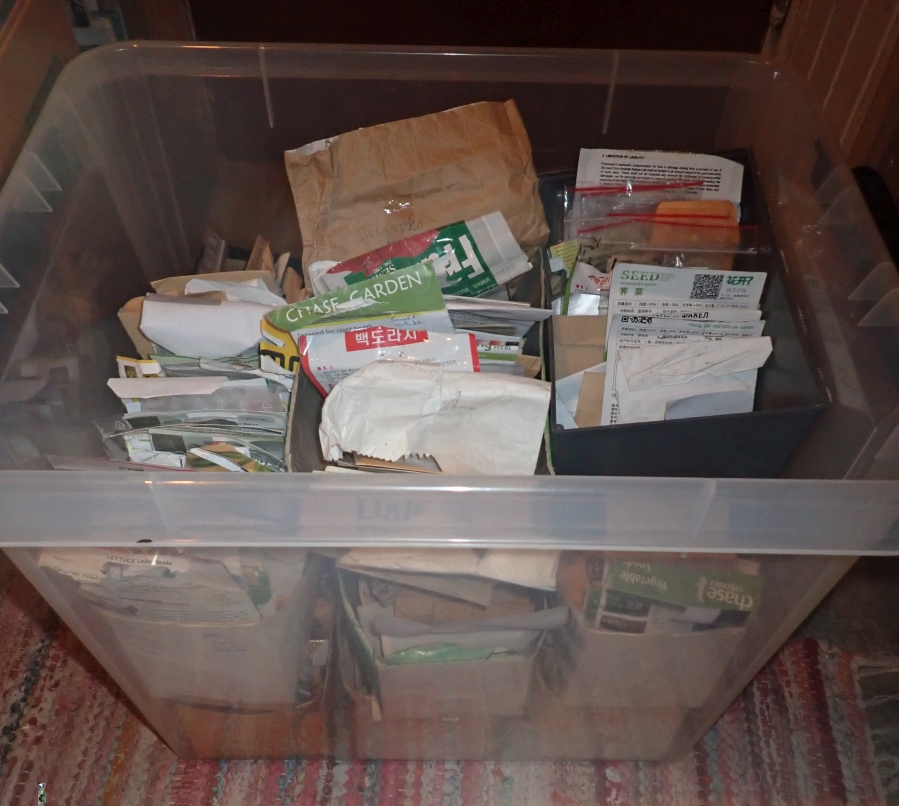
The 2023 Permaveggies / Forest Gardening course
The 5th Permaveggies / Forest Gardening course I’ve held in Malvik took place on Sunday 21st and Monday 22nd May with guest Jen McConachie who gave her forest gardening course at Presthus Farm on the Monday evening. On the Sunday we met at my garden (The Edible Garden) for a garden tour and lunch from the garden with focus this year on growing food while maintaining a high biodiversity. On Monday we visited The Væres Venner Community garden to see the World Garden and also the large collection of edible trees and bushes that have been planted there, followed by a visit to the Onion Garden at the Ringve Botanical Garden in Trondheim.
Previous Permaveggies weekends were held in 2012, 2013, 2016 and 2019 whilst the 2020-weekend had to be cancelled because of Covid. More information on previous courses can be found here: Previous Permaveggies Courses.
I didn’t take many pictures this year, so thanks to Meg Anderson, Jen McConachie and Mark Tacker who took the pictures below.
Malvik:
In the Onion Garden Chicago at the Ringve Botanical Garden:
After Jen’s forest garden course, the participants split into groups to design a forest garden in a field next to the farm which it is planned to be developed as a forest garden (get in touch if you are interested!). Here is one of the groups presenting their plans:
Wild Hive Talk at Home in Chandlers Ford: Resonating with Hampshire!
Thank you once again to all the amazing Wild Hive Collective team for organizing my talk in Chandlers Ford, my home town, on 19th November 2023. It attracted a full house of some 80 people plus helpers. See their review here: Wild Hive Collective Review
This was a special event for me being the first time I’d talked outside of Norway since Covid and dedicated to my dad (Harold G Barstow) who died last year at 97 and possibly the vegetable grower who had been at it longest in the area, here with his broad beans at 90, in a raised bed he made in his 80s, planning for old age: 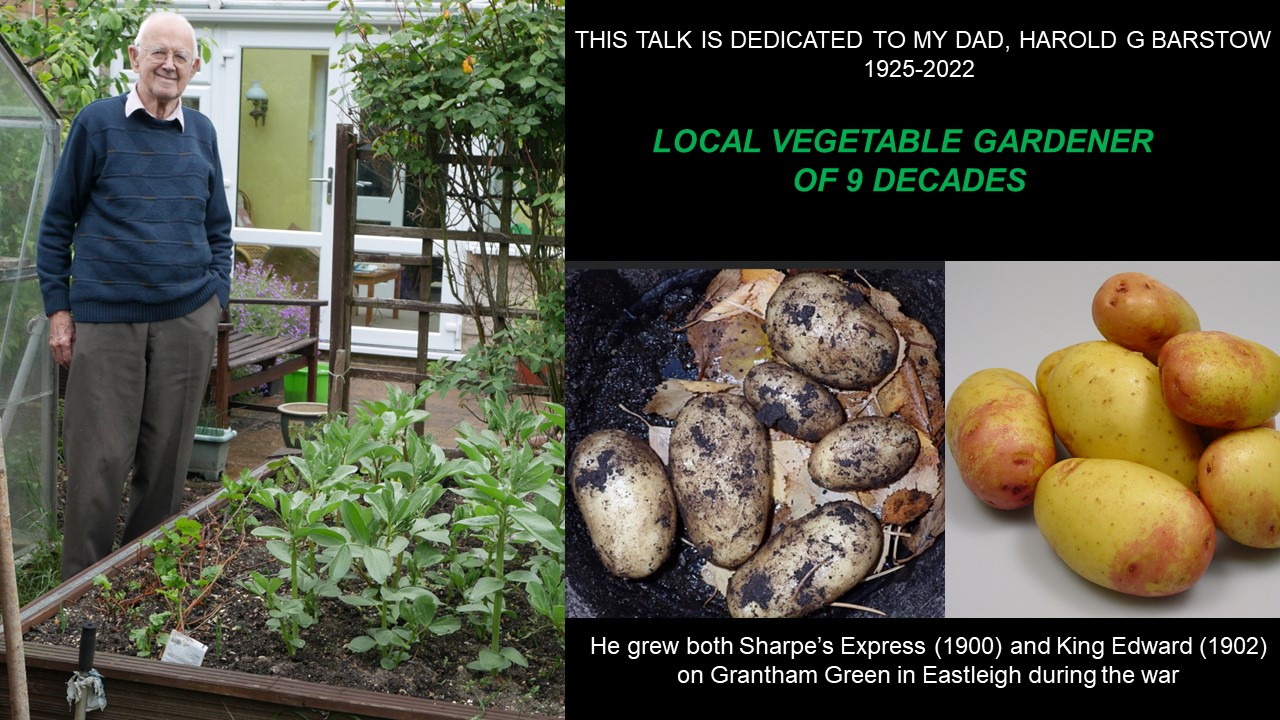 Dad had worked as a joiner/carpenter all is life (his parents couldn’t afford to give him an education and he left school early). He became an expert on Great Britain Victorian stamps (where I get my collectomanic genes from). On retirement he spent his time well, researching local history and publishing 8 or 9 books on the subject, involving learning medieval latin. He also became an artist, painting old local buildings. He wrote 4 books about the North Stoneham area where his grandfather had repaired the one-handed clock at North Stoneham (he’s pointing to him in the picture on the wall of the Cricketers Pub and he can also be seen standing with his bike in front of the church on the front of one of the books):
Dad had worked as a joiner/carpenter all is life (his parents couldn’t afford to give him an education and he left school early). He became an expert on Great Britain Victorian stamps (where I get my collectomanic genes from). On retirement he spent his time well, researching local history and publishing 8 or 9 books on the subject, involving learning medieval latin. He also became an artist, painting old local buildings. He wrote 4 books about the North Stoneham area where his grandfather had repaired the one-handed clock at North Stoneham (he’s pointing to him in the picture on the wall of the Cricketers Pub and he can also be seen standing with his bike in front of the church on the front of one of the books): …..and not forgetting my dear mum Patricia (Pat) Barstow (soon 94) who was in the audience:
…..and not forgetting my dear mum Patricia (Pat) Barstow (soon 94) who was in the audience:
The first part of my talk was all about perennial vegetables and Hampshire and all the wonderful interconnections with my family and others I’ve experienced there over the years!
In 2015, I was invited to give a two-part talk at the Walled Kitchen Gardens Network Forum at National Trust property Croome Court in Worcestershire and I discovered that two of my family were already well known and respected in that eminent group! At dinner on the first night in Pershore, it dawned on the people there that I also was the son of the “famous” North Stoneham historian and author and when it was revealed that author of the book “Garden archaeology”, Christopher Currie was my cousin, who excavated the North Stoneham site, then I was well and truly one of them!! For there is a strong link as Capability Brown (who designed Croome’s gardens) was almost certainly also responsible for North Stoneham. Several of those at dinner that night were from Hampshire and campaigning to save the North Stoneham site!! Small world and resonating with the cosmos once again…………. It was the chairwoman of the forum, Susan Campbell, one of the most knowledgeable people in the land on kitchen gardening and edible plants who had invited me to Croome, having read my book. She had thought I was Norwegian until we met. She and her husband Mike have a fantastic beachside property in Hampshire where I visited a year or so after Croome. The title of her book “Charleston Kedding: A History of Kitchen Gardening” is one of the most original book titles. Charleston Kedding is a fictional place around which the book is based, the name being an anagram for Old Kitchen Gardens!
It was the chairwoman of the forum, Susan Campbell, one of the most knowledgeable people in the land on kitchen gardening and edible plants who had invited me to Croome, having read my book. She had thought I was Norwegian until we met. She and her husband Mike have a fantastic beachside property in Hampshire where I visited a year or so after Croome. The title of her book “Charleston Kedding: A History of Kitchen Gardening” is one of the most original book titles. Charleston Kedding is a fictional place around which the book is based, the name being an anagram for Old Kitchen Gardens! 

The following year was the 300th anniversary of Capability Brown’s birth:
See more pictures from Croome here https://www.edimentals.com/blog/?page_id=2554
It was at Croome I talked about Hostas, jokeing as I did in my original article on “The Oriental Spinach” in Permaculture Magazine, about Prince Charles having the most productive forest garden in the UK as he had a national collection of large-leaved Hostas in a woodland area at Highgrove, not knowing that the Prince’s head gardener sat in front of me. I later signed a copy of my book “To HRH Prince Charles, good luck with your Hosta cuisine” asking them to pass on to the prince. This lead the following year to being invited to Highgrove to see the collection…sadly, the Prince didn’t turn up as it was his mum’s birthday….priorities!
I next introduced a good ex-pat friend in Norway, David Woodland, who had attended a talk I gave in Bergen over 10 years ago now. I had mentioned during that talk I was from Hampshire and afterwards he asked where. I said Eastleigh and he then told me he grow up only a mile or so away in Colden Common! We had been growing veg in Norway for as long as one another! David’s father was Dennis Woodland who did most of the work and took pictures for the Hillier Manual of Trees and Shrubs in the 70s. David’s family lived for some time at Jermyn’s House at the Hillier Gardens, just 6 miles from where my family have lived since the early 70s in Chandlers Ford. On the back of an interview I did with Radio Solent in Southampton soon after the book came out, I was invited to give a walk and talk at Hilliers in 2015 and the talk was in Jermyn’s House! This was the first of several walks and talks I did all over the world in botanical gardens and at Hilliers I was allowed for the first time to pick from the ornamental borders for a lunch salad! Mum and Dad attended (Dad can be seen in the background in the second picture below)!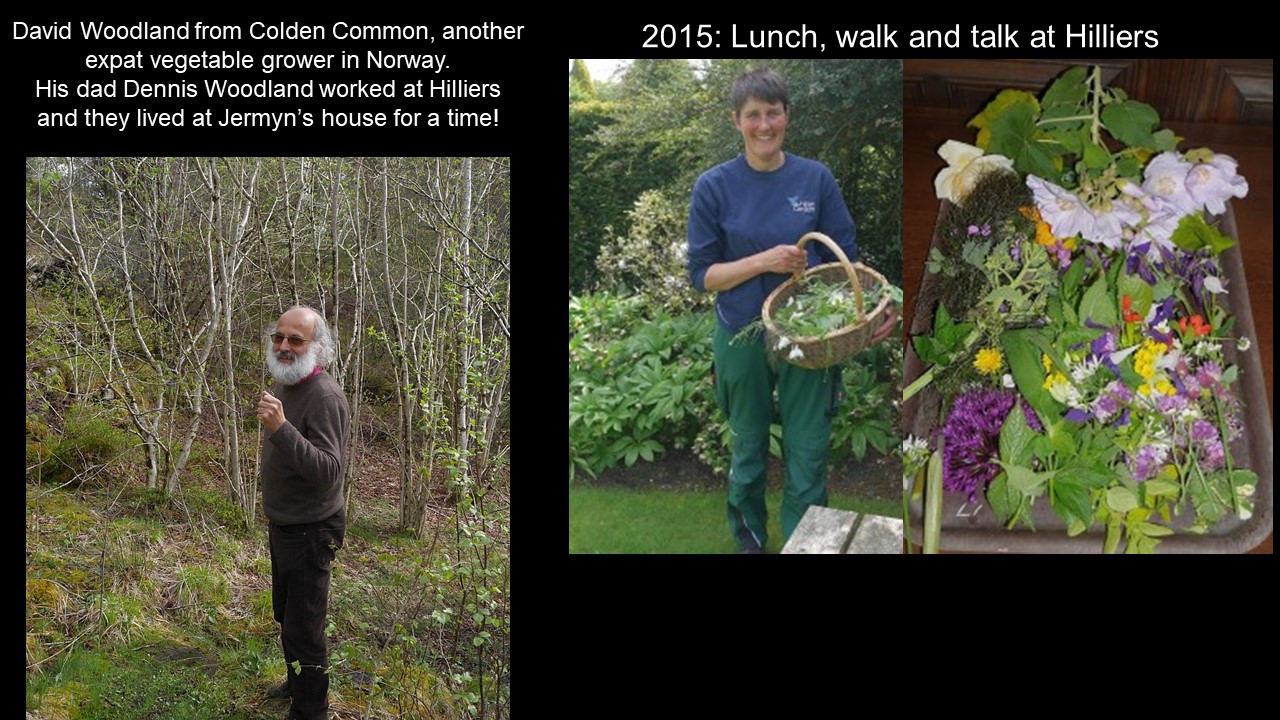
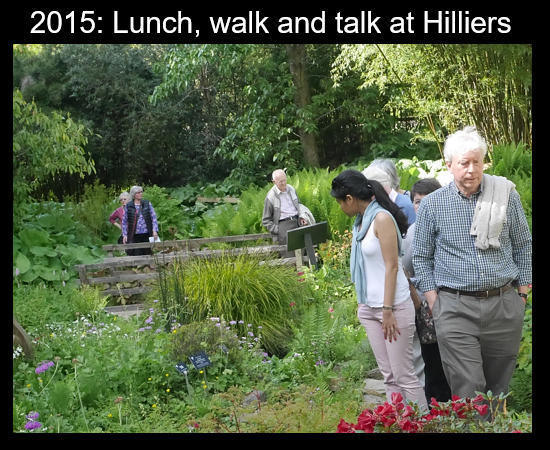 See another blog post on the Hilliers walk and talk here: https://www.edimentals.com/blog/?page_id=1281
See another blog post on the Hilliers walk and talk here: https://www.edimentals.com/blog/?page_id=1281
The next interconnection happened at that Hillier talk. As I was in Hampshire I talked about what I call the Hampshire perennial vegetable triangle where both Sea Kale (the most British of all vegetables), through William Curtis in Alton and Gilbert White in Selbourne, and watercress (Alresford) were domesticated in the 17-1800s: 
Little did I know but Sheila John, a volunteer at the Curtis Museum in Alton, was in the audience at Jermyn’s House. After the talk, Sheila approached me and asked if I would give my talk in Alton which I did a couple of years later in the Allen Gallery where, in the back garden they were planning a garden of William Curtis plants. I spent the next day in the library of the museum which had several rare books on Curtis. Sheila had also in the meantine helped me get a copy of his pamphlet on sea kale (below) from the British Museum:


….and this takes me back to garden historian Susan Campbell who I visited in 2017 at her home on the Solent, where she had a small sea kale garden next to the beach supplying sea kale to a restaurant in London (in season). At that time, she was the only one growing this wonderful vegetable for sale; see more at https://www.edimentals.com/blog/?p=10713
The same day I had visited another of the speakers at Croome, Tim Phillips who has a wonderful vineyard within a walled garden near Susan in Lymington, see https://www.edimentals.com/blog/?p=10678
I was happy to spot Tim in the audience for the Chandlers Ford talk….thanks for the bottle Tim (pictures in the gallery at the bottom)!
I can mention a few more connections to finish. In April 2008, I was with mum in the Hillier gardens and we’d stopped to admire some rather colourful purple spring shoots of a Hosta, possibly the cultivar “Patriot” (picture below). At that time I was writing my article for Permaculture Magazine on “Hosta: The Oriental Perennial Spinach” and was looking for ones with “edimental” shoots (a word I “invented” at about that time). At that moment a familiar face comes striding down the hill towards us with a group. It was well known plantsman, gardener, author and broadcaster, Roy Lancaster who has long been associated with Hilliers and I knew he lived locally in Chandlers Ford. He stopped for a chat and we talked for about 15 minutes about the edibility of Hostas and other unusual edibles Roy had come across on his travels. Below are those Hosta shoots and Roy disappearing up the path having lost the party he had been with!

 Roy’s plant exploring writing had always been an inspiration for me, having read his book A Plantsman in Nepal in the 80s! It was to be over 15 years before we should meet again as he was in the audience at my talk, invited by Wild Hive’s Lizzie Dunn who is in his family. I was hoping he would come as my friend David Woodland (above) had known him when his dad was working at Hilliers and had sent a greeting to Roy which I passed on when I saw him react to the slide of David I showed! Roy told me that they hadn’t met since he had left for Norway! Roy came up afterwards to tell me that he had enjoyed the talk and encouraged me to keep it up….wow!
Roy’s plant exploring writing had always been an inspiration for me, having read his book A Plantsman in Nepal in the 80s! It was to be over 15 years before we should meet again as he was in the audience at my talk, invited by Wild Hive’s Lizzie Dunn who is in his family. I was hoping he would come as my friend David Woodland (above) had known him when his dad was working at Hilliers and had sent a greeting to Roy which I passed on when I saw him react to the slide of David I showed! Roy told me that they hadn’t met since he had left for Norway! Roy came up afterwards to tell me that he had enjoyed the talk and encouraged me to keep it up….wow!
Incidentally, I grow one of Roy’s introductions from Nepal, a lovely form of Allium wallichii which I call “Lancaster”. It can be seen in the Onion Garden Chicago in Trondheim that I look after! Long hoverfly on Allium wallichii “Lancaster” at the Ringve Botanical Gardens
Long hoverfly on Allium wallichii “Lancaster” at the Ringve Botanical Gardens
I was also very happy to see Jen Butcher from Nottingham at the talk. She had stayed with us in Norway for a week on an RHS bursary in May and brought along two others from RHS Wisley! Another long traveller was Chris Seagon and his wife who had travelled down from Lincolnshire. They have relocated their Devon Edible Garden Nursery there!
The final connection is a special thanks to Nic Landsdowne and her husband Richard who run the venue at the Hilt in Chandlers Ford. It was also Nic, who is one of my mum’s helpers who suggested earlier in the year that I should be in touch with Wild Hive….thank you, Nic, this wouldn’t have happened without you!
…and what a lovely review of my talk event by Wild Hive (follow the link below and help them if you can, what they are doing is incredibly important!). Through the amount of work and promotion the Wild Hive – Ecological Education Collective crew put in to this, they thoroughly the fundrasing success it was!
https://www.wildhivecollective.org.uk/post/extreme-salad-man-stephen-barstow-talks-on-home-turf-in-hampshire
The talk was filmed, so will hopefully be made available at some stage!
Seed offered at the talk:
See https://www.edimentals.com/blog/?p=31661
Below are a collection of pictures taken by Wild Hive on the day (unless stated). Thanks all…and I’ll hopefully be back for more in the spring!

Free temporary access to my book and articles!
Thanks to my publishers Permanent Publications and Permaculture Magazine, free browsing access is available until Thursday to both my book Around the World in 80 plants, two articles I wrote for the magazine on Hablitzia (the Caucasian Spinach) and Hosta (Oriental Spinach) as well as the current issue of the magazine! This is related to my talk tomorrow (Sunday) at the Hilt in Chandlers Ford (see more at https://www.tickettailor.com/events/hiltingburycommunityassociation/1043494)! Please consider subscribing to Permaculture Magazine!
Signed copies of the book can also be purchased from the author in Norway.
READING ROOMS access to
Around The World In 80 Plants:
https://delta.exacteditions.com/room/aroundtheworldin80plants/issue?Expires=1700750203&KeyId=eki_SCmNVK_BXtL6jBT5pB79pg&Signature=af330c3cc54ded5394321786f68e4653ec01e614
Permaculture Magazine Issue 52 (with my feature on Hablitzia):
https://delta.exacteditions.com/room/issue/permaculture/no52summer2007?Expires=1700750848&KeyId=eki__qmo_tE1uyPllYXLzdKPeQ&Signature=3a539b6fb0838d9a3d3f13246d93a25ff2458d8f
Permaculture Magazine Issue 83 (with my feature on Udo, Aralia cordata):
https://delta.exacteditions.com/room/issue/permaculture/no83spring2015?Expires=1700750817&KeyId=eki_B9S2HnkVYdIq-mFiherR3w&Signature=c51878e63e6533a09446fad9657ee20b3ea41456
Permaculture Magazine Issue 118 (the current issue):
https://delta.exacteditions.com/room/permaculture/issue?Expires=1700750013&KeyId=eki_xaPVsD8OQLOUo-N4lKnL-g&Signature=8507c6913aa8e30363d61d95d9d07b749fe68f16
Rare perennial veg seed on offer in Chandlers Ford
Below is a list of seeds of (mostly) perennial vegetables that will be offered at my talk at the Hilt in my home town of Chandlers Ford on Sunday 19th November 2023 (see more at https://www.tickettailor.com/events/hiltingburycommunityassociation/1043494). Income will go to Wild Hive who are organising the event!
Angelica archangelica ssp archangelica v. Majorum “Vossakvann Markusteigen”; garden Angelica: an old cultivated variety of mountain Angelica rescued from old farms in the Voss area of western Norway (self-seeds and dies after flowering); popular with many pollinators (see Around the World in 80 plants)
Allium victorialis “Eks-Røst”; victory onion: seed collected from plants in the Onion Garden Chicago in Trondheim, originally collected from a naturalized population on the island of Røst in the picturesque Lofoten Islands (could have crossed with other Allium victorialis plants in the garden. Popular with many pollinators (see Around the World in 80 plants) Naturalised Allium victorialis – Granvin, Norway
Naturalised Allium victorialis – Granvin, Norway
Phyteuma spicata; spiked rampion: edible roots, leaves and flower buds and very popular with pollinators. My article on these great plants can be downloaded here: https://www.edimentals.com/blog/?p=21018
Lilium martagon; Martagon lily: edible yellow bulbs and flowers. Great source of carbohydrates for the ground layer of a forest garden. See https://www.edimentals.com/blog/?p=8614
Allium hookeri var muliense; Yellow Hooker’s onion: Allium hookeri is grown on a food scale in China for the market. This is an edimental yellow flowered variety.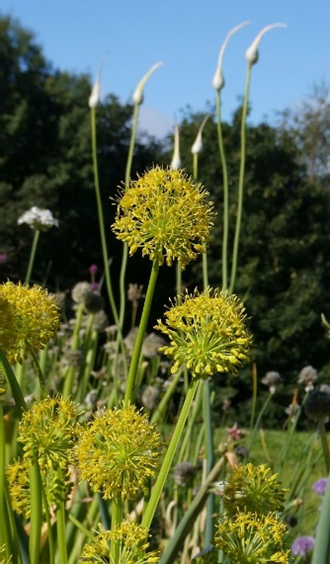
Allium hookeri var muliense
Hablitzia tamnoides; Caucasian spinach: this could well be my favourite perennial vegetable, long-lived, hardy, productive, shade loving and nutritious. Introduced by me through an article “Caucasian Spinach” in Permaculture Magazine in 2007! See Around the World in 80 plants and https://www.edimentals.com/blog/?page_id=1984. Hablitzia tamnoides
Hablitzia tamnoides
Allium stipitatum; Persian shallot is cultivated in a big way particularly in Iran and sold dried in Iranian supermarkets around the world. It is also one of the commonest ornamental onions sold each autumn (but, Alliums are often wrongly identified): a beautifully useful edimental! See https://www.edimentals.com/blog/?page_id=893 and other blog posts. Allium stipitatum, Persian shallots
Allium stipitatum, Persian shallots
Allium validum; Pacific onion. A traditional edimental from Western North America, important native American food plant (see Around the World in 80 plants)
Taraxacum tortilobum; the legendary moss-leaved dandelion: described in The Vegetable Garden (1920); see more about this great dandelion in Around the World in 80 plants.
Moss-leaved dandelion
Allium nutans Eks-Lena; a great Siberian onion with wide leaves, originally collected from a Siberian vegetable garden. Could have crossed with other Alliums in the Onion Garden Chicago in Trondheim. See more in Around the World in 80 plants.
Cryptotaenia japonica “Atropurpurea”; purple mitsuba is a popular Japanese herb/vegetable and interesting shade loving ground cover for a forest garden. See more in Around the World in 80 plants.
Allium fistulosum; Japanese welsh onion cultivar that has proved hardy. Originally purchased as a Japanese salad onion.
Agastache anisata “Aurea”; yellow anise hyssop
Brassica oleracea “Daubenton perennial kale x Late Purple Flowering Broccoli”; perennial kale hybrid (needs selecting for a dreamed of perennial purple flowering broccoli)
Dystaenia takesimana; giant Ulleung celery: A great new perennial vegetable, please read my article on this plant at https://www.edimentals.com/blog/?p=24998
Allium wallichii; Nepal or Sherpa onion: a spectacular edimental onion from the Himalaya – the dried leaves are an important vegetable (dried for market at high elevations)
Allium wallichii
Oenothera biennis; evening primrose: A great biannual edimental which self-sows – all parts are edible. Try the seeds as a topping on bread and baked dishes.
Malva moschata; musk mallow: the leaves are great in salads, stir-fries and soups and are provided in smaller amounts throughout the season. Flowers are used to decorate salads!
Allium macranthum; chiugok or small bird’s garlic is another great edimental from the Himalaya. See my article on this plant’s ethnobotany at https://www.edimentals.com/blog/?p=29255
Rumex acetosa, garden sorrel: seed from a mix of 6 cultivated sorrel varieties from Russia.
Rumex patientia, patience dock is a larger less sour plant than sorrel that should be in any perennial garden!
Allium tuberosum; Chinese chives: see more in Around the World in 80 plants.
Cirsium setidens is an important perennial thistle from Korea that pollinators love!
Tigridia pavonia; cacomitl: see my article Edimental cacomitls at https://www.edimentals.com/blog/?p=5470
Hydrophyllum spp., Indian salad: North American forest garden ground cover; see Around the World in 80 plants.
Claytonia virginica; spring beauty; a beautiful spring flowering ground cover for the forest garden that can produce large tubers.
Allium hymenorrhizum is one of my favourite spring harvested onions which is tall and slender.
Allium splendens
Cirsium tuberosum, tuberous thistle (edible tubers and a wonderful pollinator friendly and thornless thistle)
Organic week in Trøndelag / Økouka i Trøndelag
Last week was National Organic Week (Økouka), a busy week for me as I had two garden tours in my Edible Garden in Malvik (the rain stopped both days just before we started), a walk and talk in the community garden at Væres Venner and a talk at Stammen Cafe & Bar in Trondheim on “Perennial Climate-friendly Food Plants for Urban Areas” talking about 15 advantages of growing perennials! Below you can see pictures from each of the events which were all well attended. I’ve credited the various photographers below. Thanks to all that came along!
1. Garden tour on Wednesday 27th September
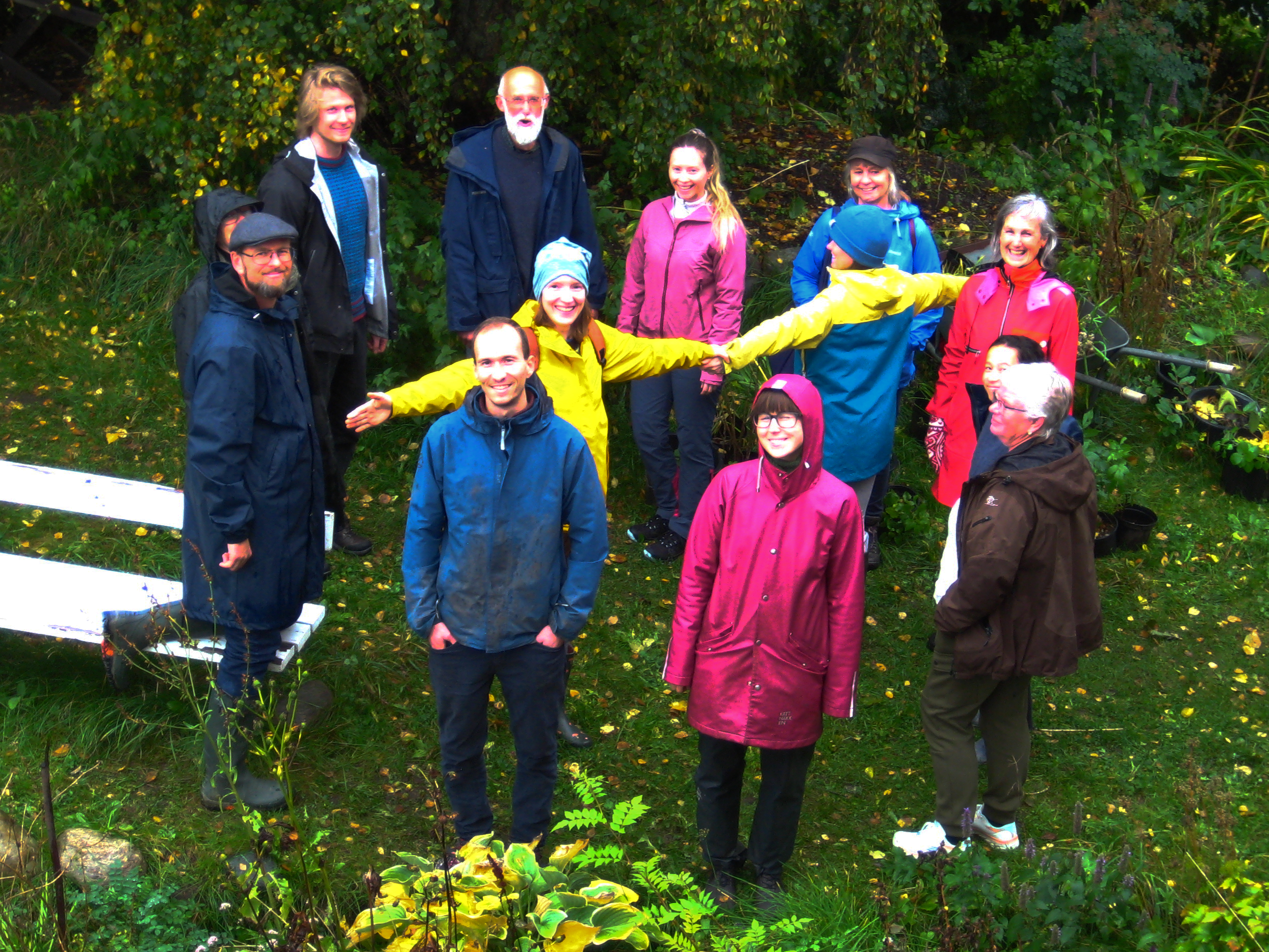 Making the Ø letter for Økouka (picture: Margaret Anderson)
Making the Ø letter for Økouka (picture: Margaret Anderson)
2. Talk at Stammen
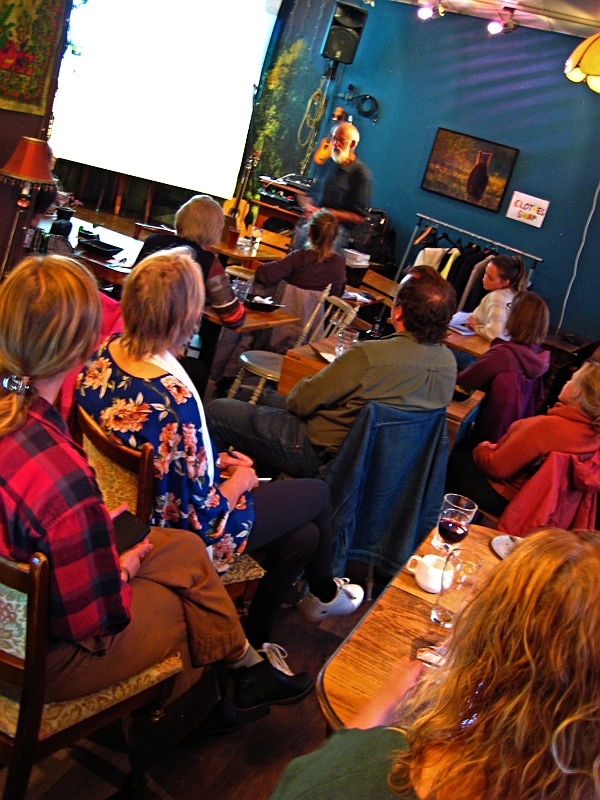
2. Garden tour on Sunday 1st October
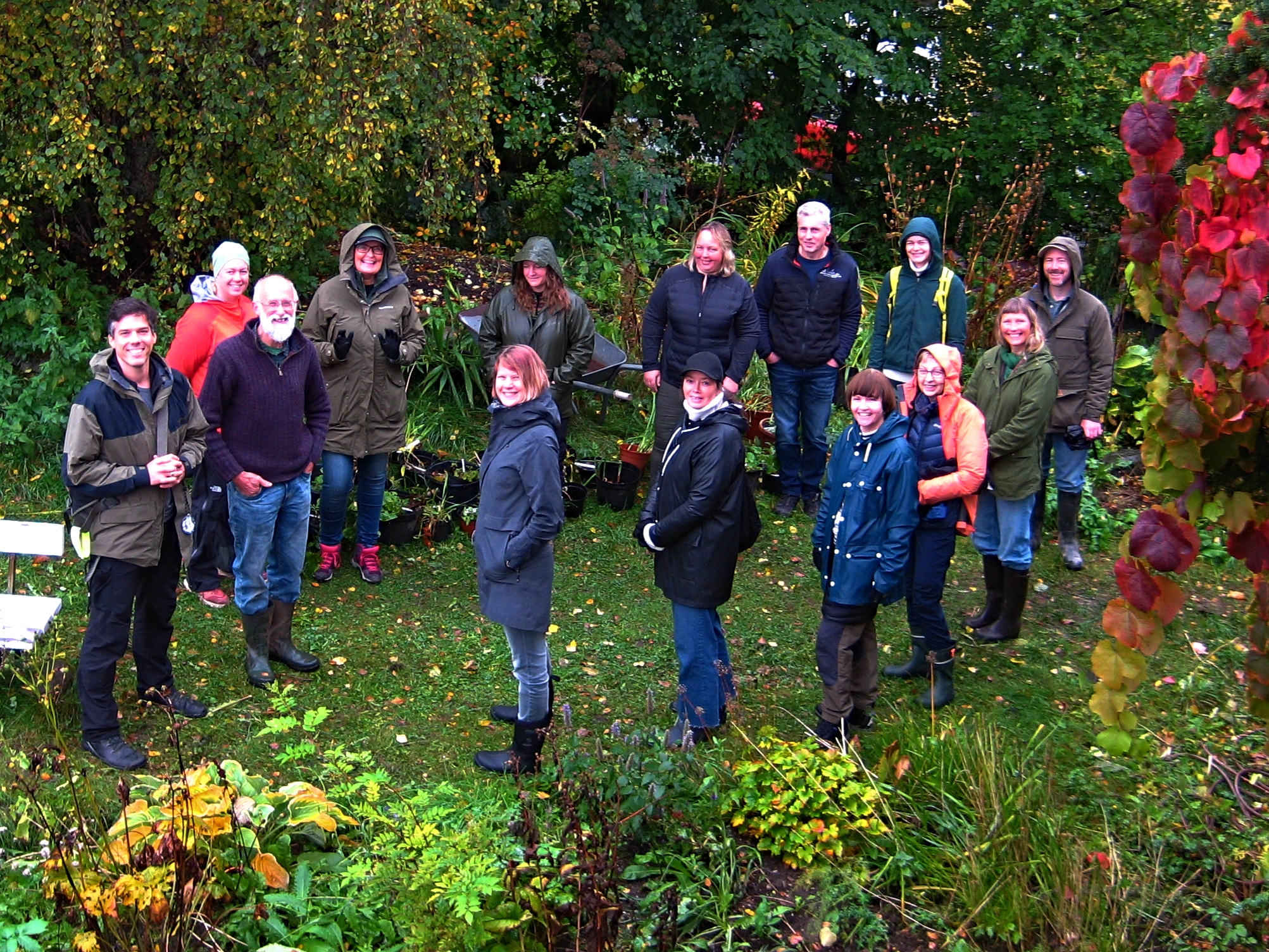
Pictures by Markus Tacker (click on the album pictures for more information):
Pictures by Marit By (click on the album pictures for more information)::
4. Walk and talk in the Væres Venner Community Garden
Pictures by Marit By (the World Garden looking good in its autumn colours with the backdrop of the old ash trees):

Hablitzia Pinaattiohukaiset
Yesterday, I was preparing my talk for the Finnish Permaculture Association (see https://youtube.com/live/CYBqioWTr6U) and was reminded that I had mentioned in my book that Hablitzia could be used in place of spinach in Finnish spinach pancakes (pinaattiohukaiset). With my Hablitzia tamnoides (Caucasian spinach; köynnöspinaatit) shoots having grown well recently, I decided to make these Finnish-style habby pancakes for lunch to get in the mood for the talk. I must admit, I didn’t look up a recipe and just improvised (recipes make cooking complicated in my mind!) using ingredients I felt should be in there. Apart from plentiful Hablitzia shoots I mixed in whole grain oat flour, eggs, garlic, chili and pepper and fried them in butter. It was served with a salad which also included Hablitzia! First, the quotation from Around the World in 80 plants (suggested by Jonathan Bates in the US in his article on Hablitzia):
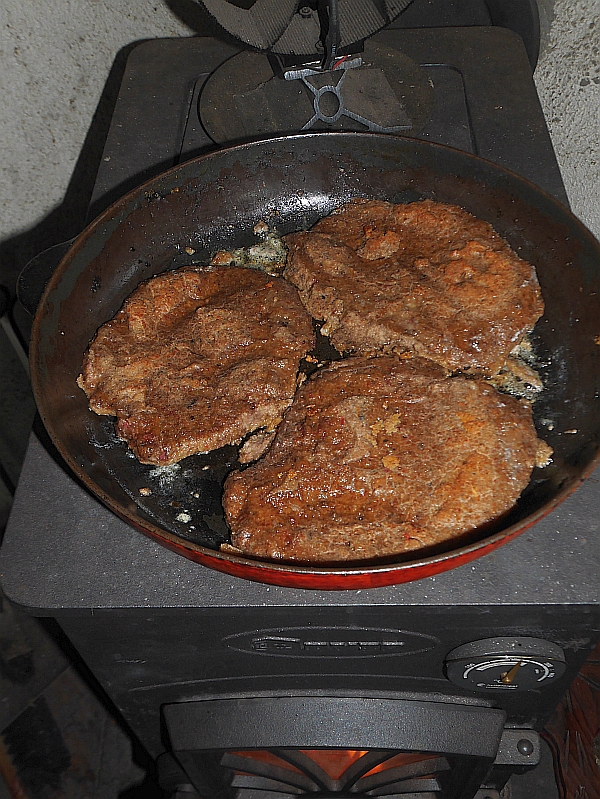

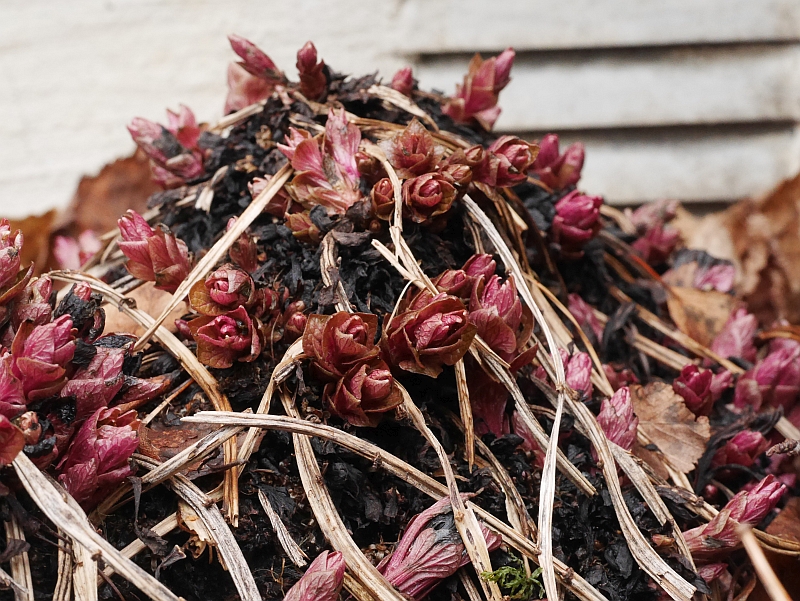

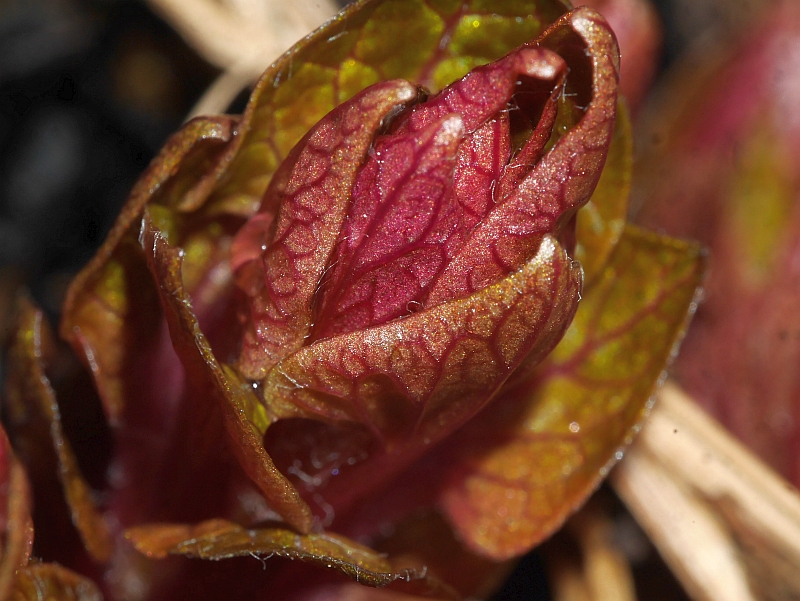


Edimentals Goes Mainstream
On the 12th June, I gave my first webinar at a mainstream gardening conference in the US, the Southeastern Plant Symposium, hosted by the JC Raulston Arboretum and Juniper Level Botanic Garden in Raleigh, North Carolina. I had thought that the invitation was on the back of a successful talk I gave at the Atlanta Botanical Gardens in September 2019. However, it turned out not to be the case and one of the organizers horticulturist and owner of Plant Delights Nursery, Tony Avent, had read my book, enjoyed it and had suggested to the committee to invite me!
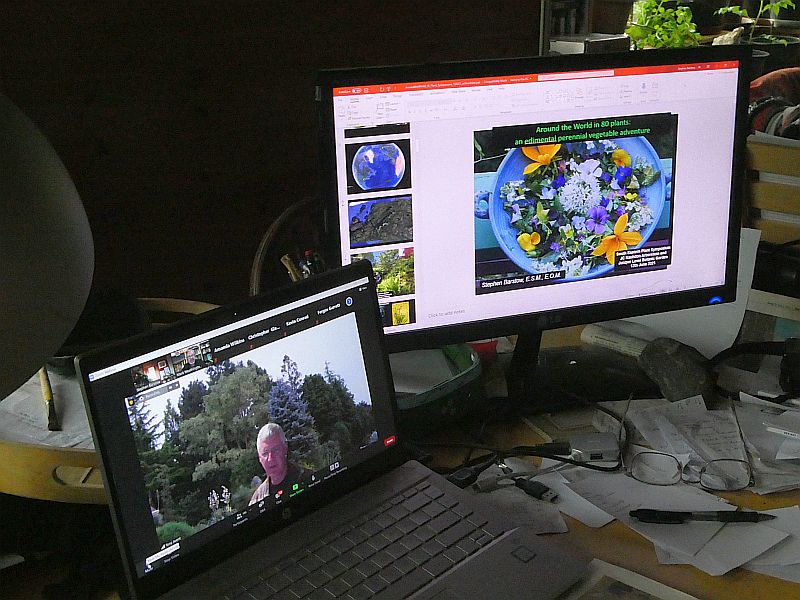
I was sandwiched between some great ornamental gardeners and plant breeders including Fergus Garrett of Great Dixter in the UK. I particularly enjoyed Aaron Floden’s talk (from the Missouri Botanical Garden) on unexploited native plants (in an ornamental context) and plant breeder Peter Zale’s talk on Hosta breeding (the market for Hostas in the US is enormous….time for a small segment dedicated to Hostas for food!). Edimental gardeners can, as I have over the years, get a lot of inspiration from ornamental gardeners.
The feedback after the event was very positive. One of the participants, Marty Finkel, wrote an article about the talk which has just been published on page 10 of the Granville Gardeners Gazette (available for all to read!)
see http://www.thegranvillegardeners.org/wp-content/uploads/2021/07/Gazette-2021-07.pdf (after an article about human composting!)

